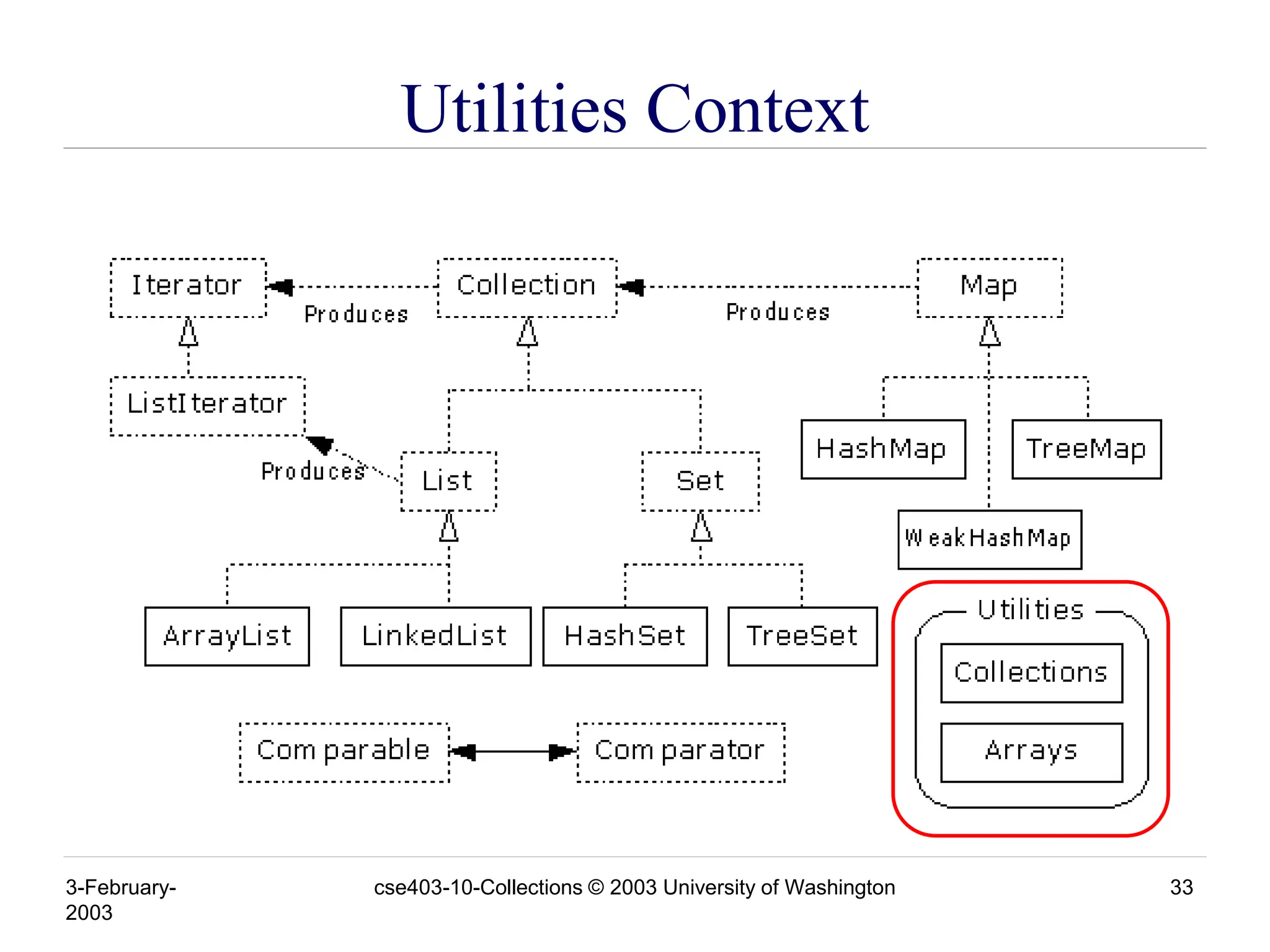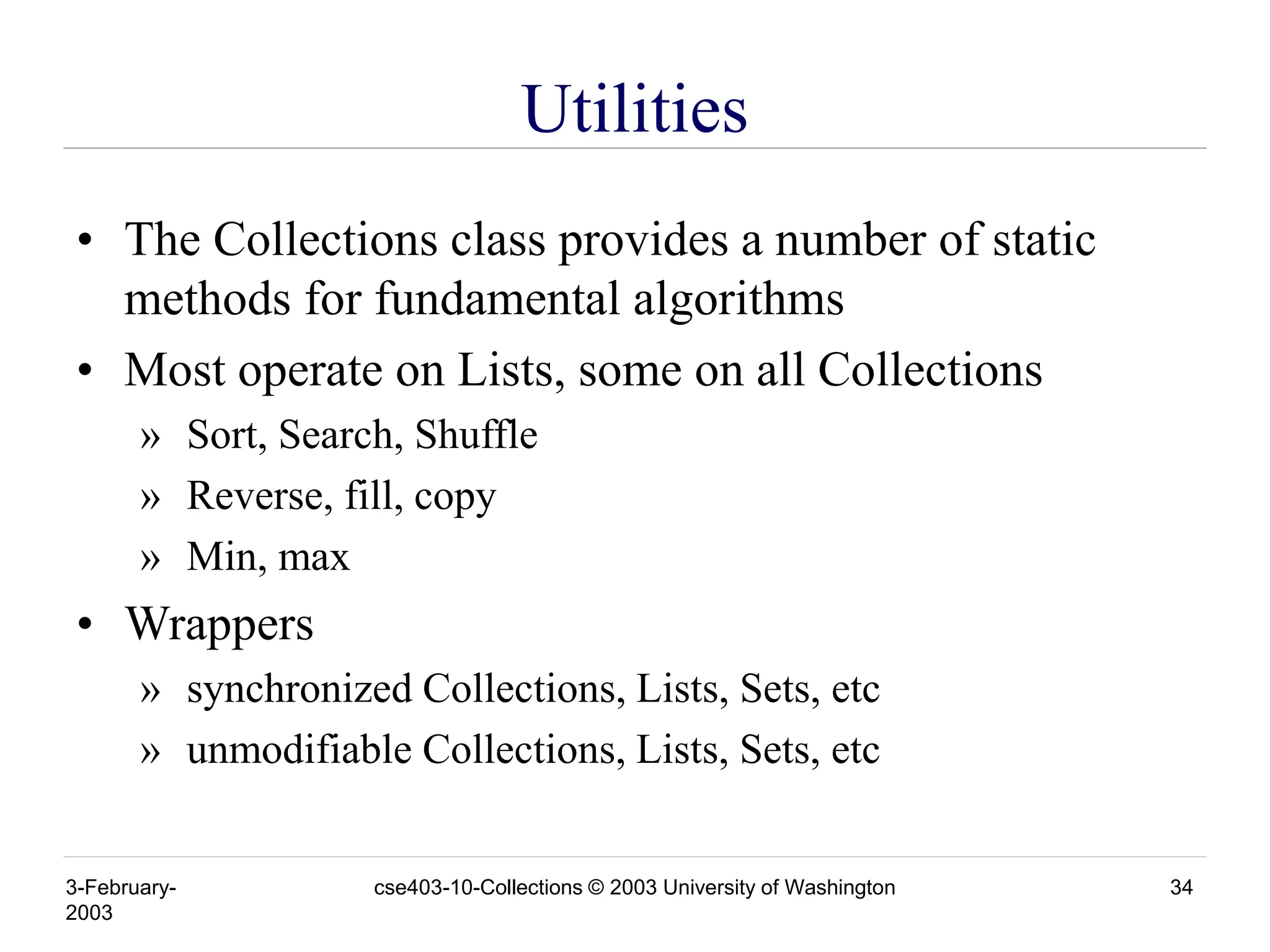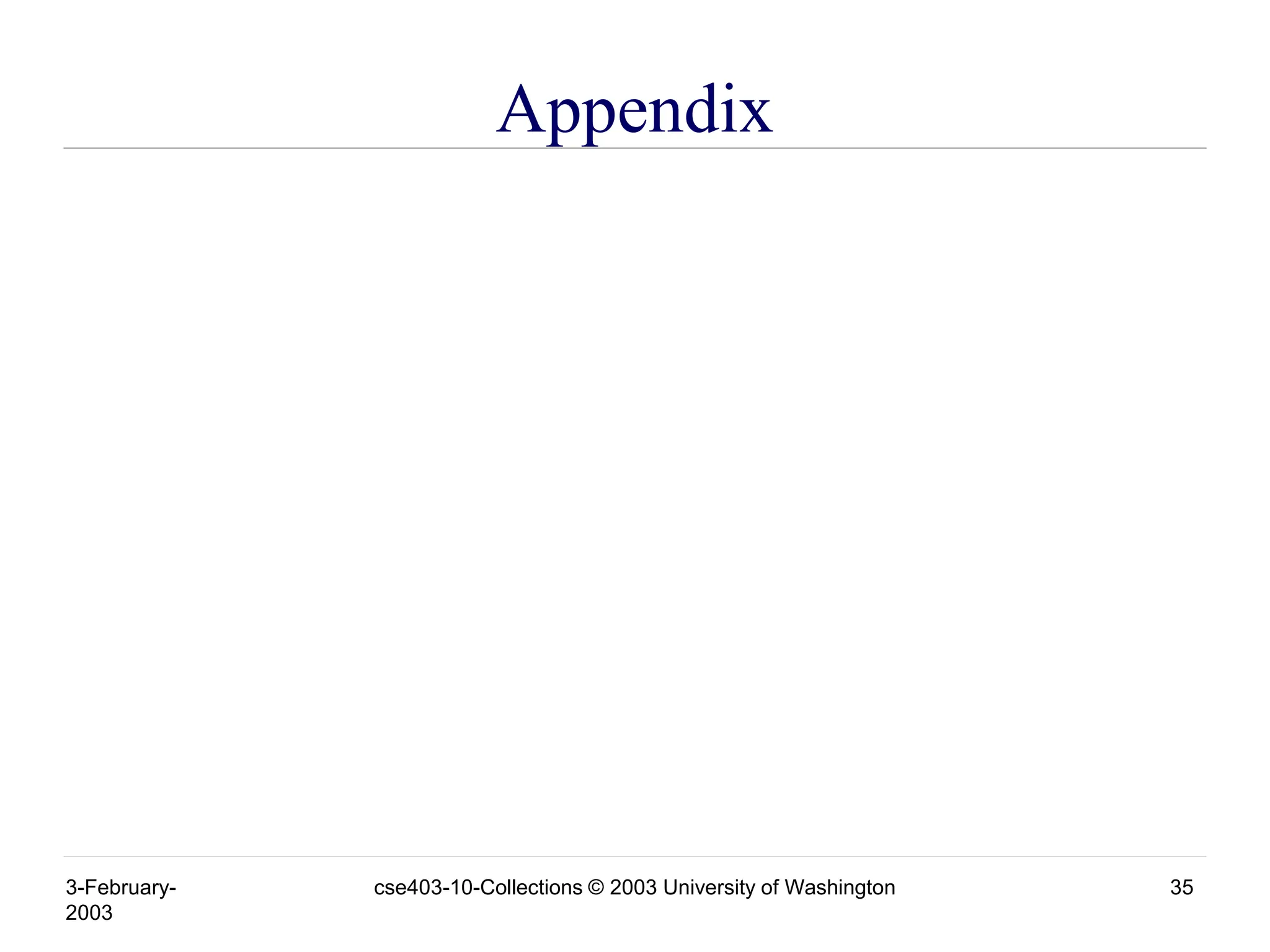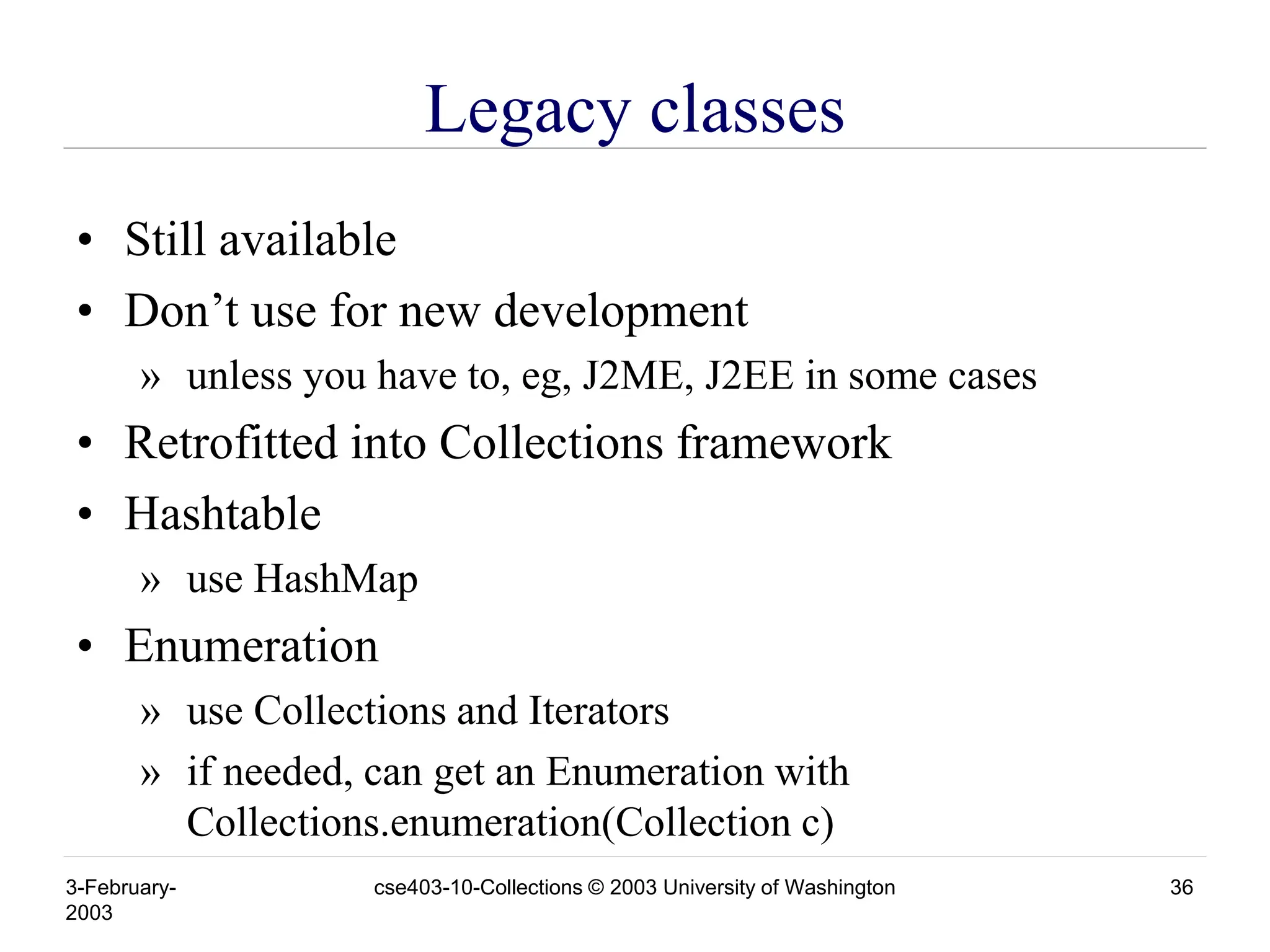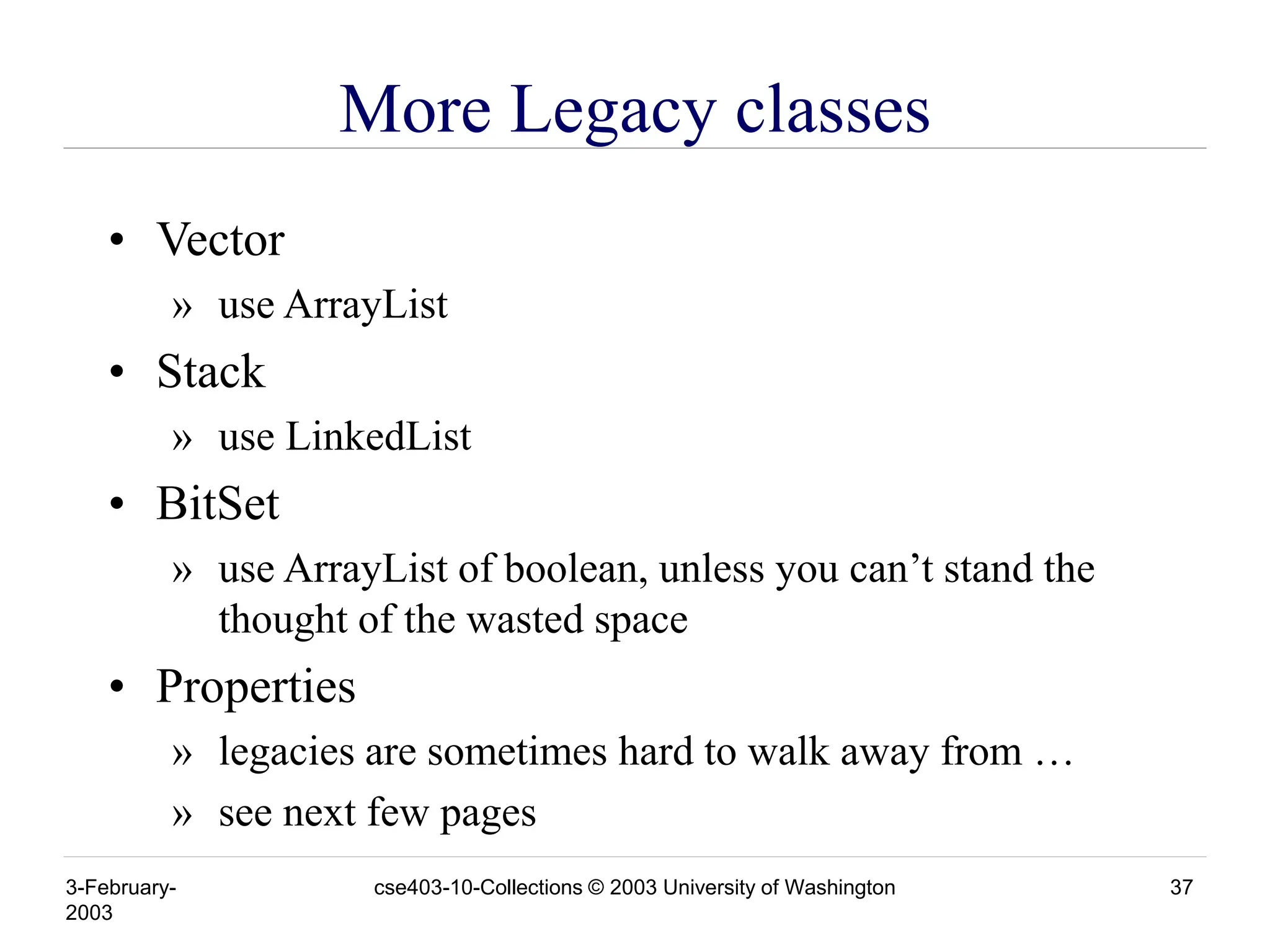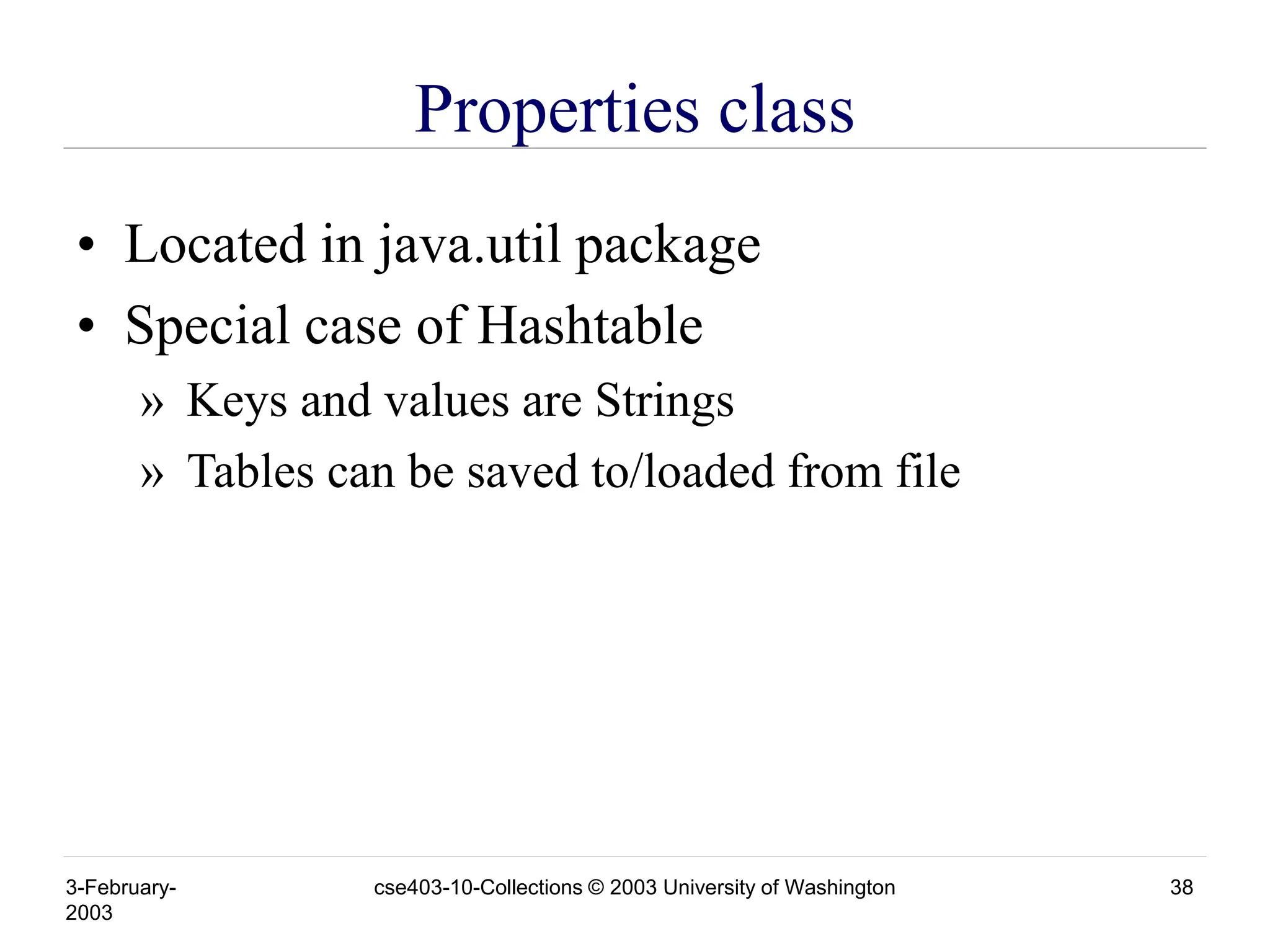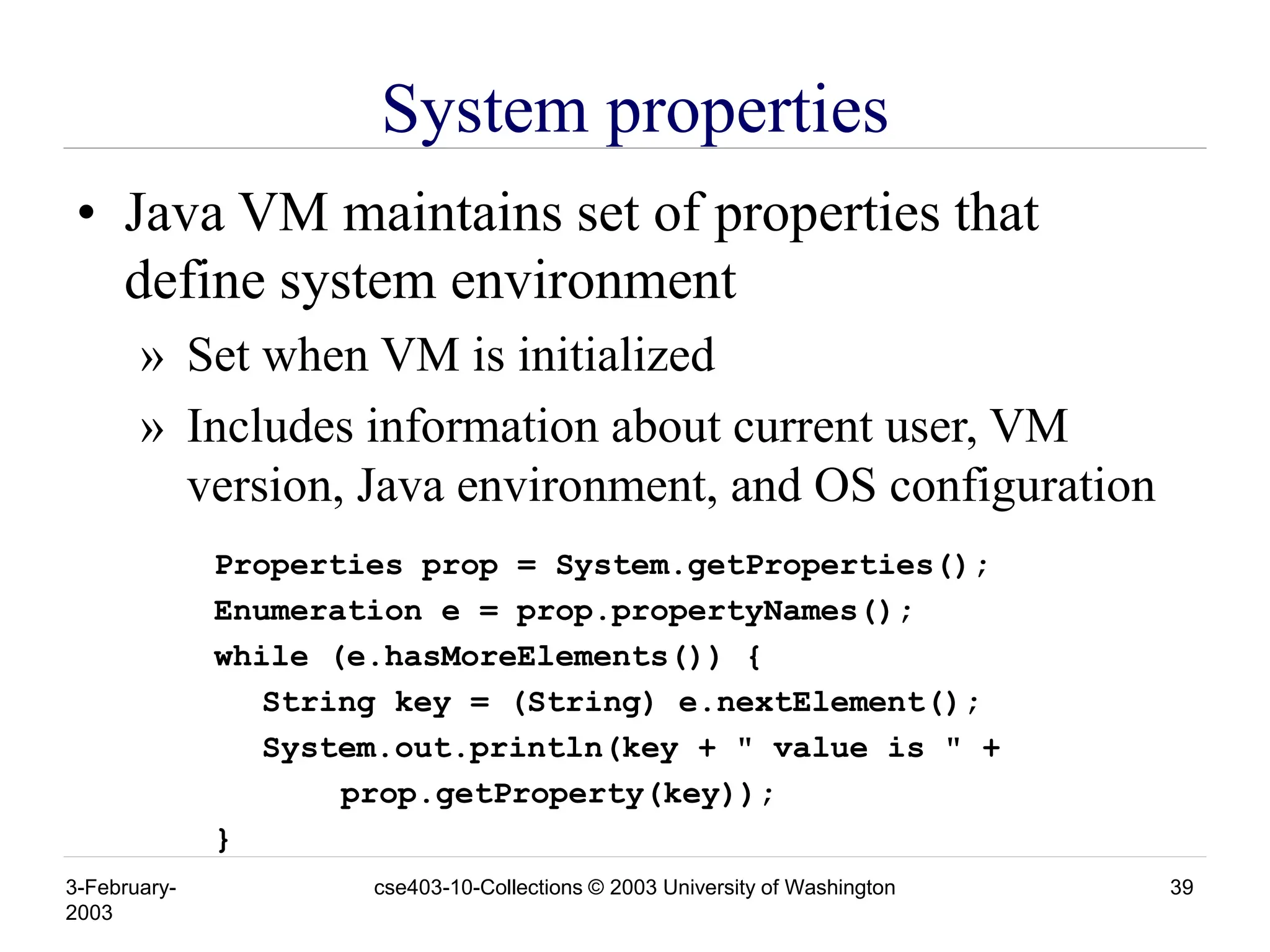The document provides an overview of Java's Collections Framework, which is essential for grouping and manipulating data objects. It details key concepts such as collection interfaces, implementations like ArrayList and LinkedList, and their associated methods. The document also discusses bulk operations, utility methods, and legacy classes, emphasizing their transition and usage in modern Java development.
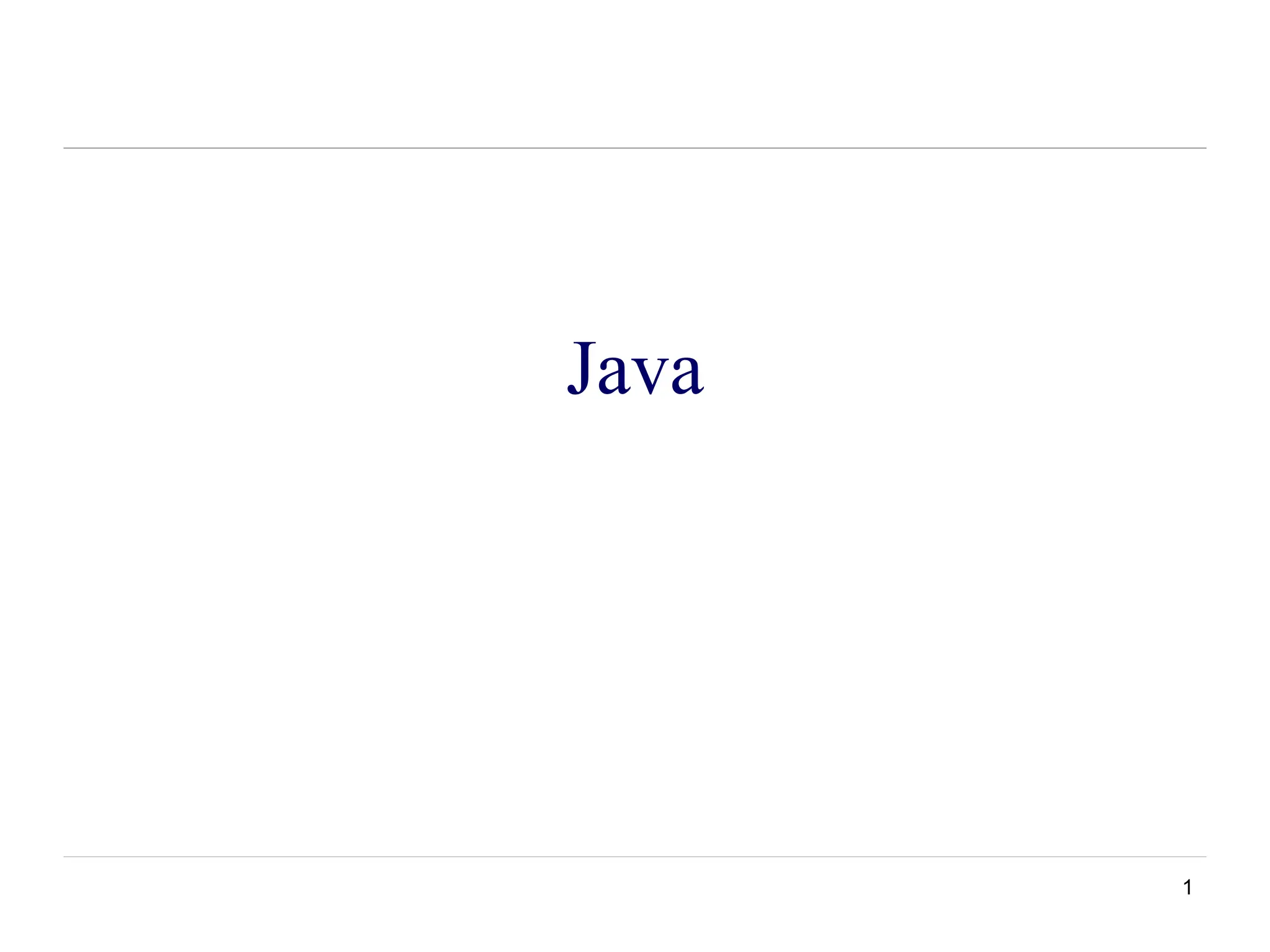
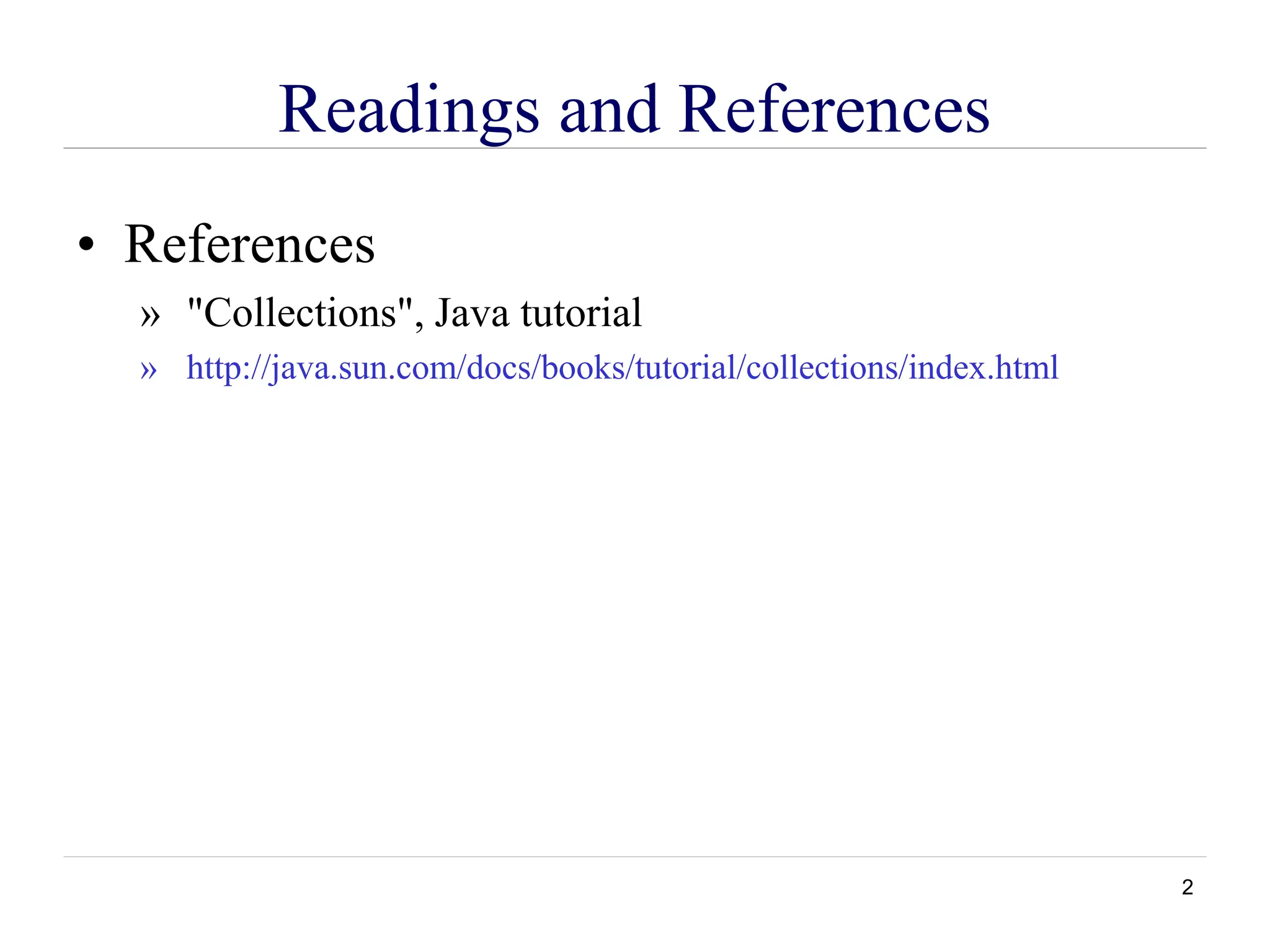
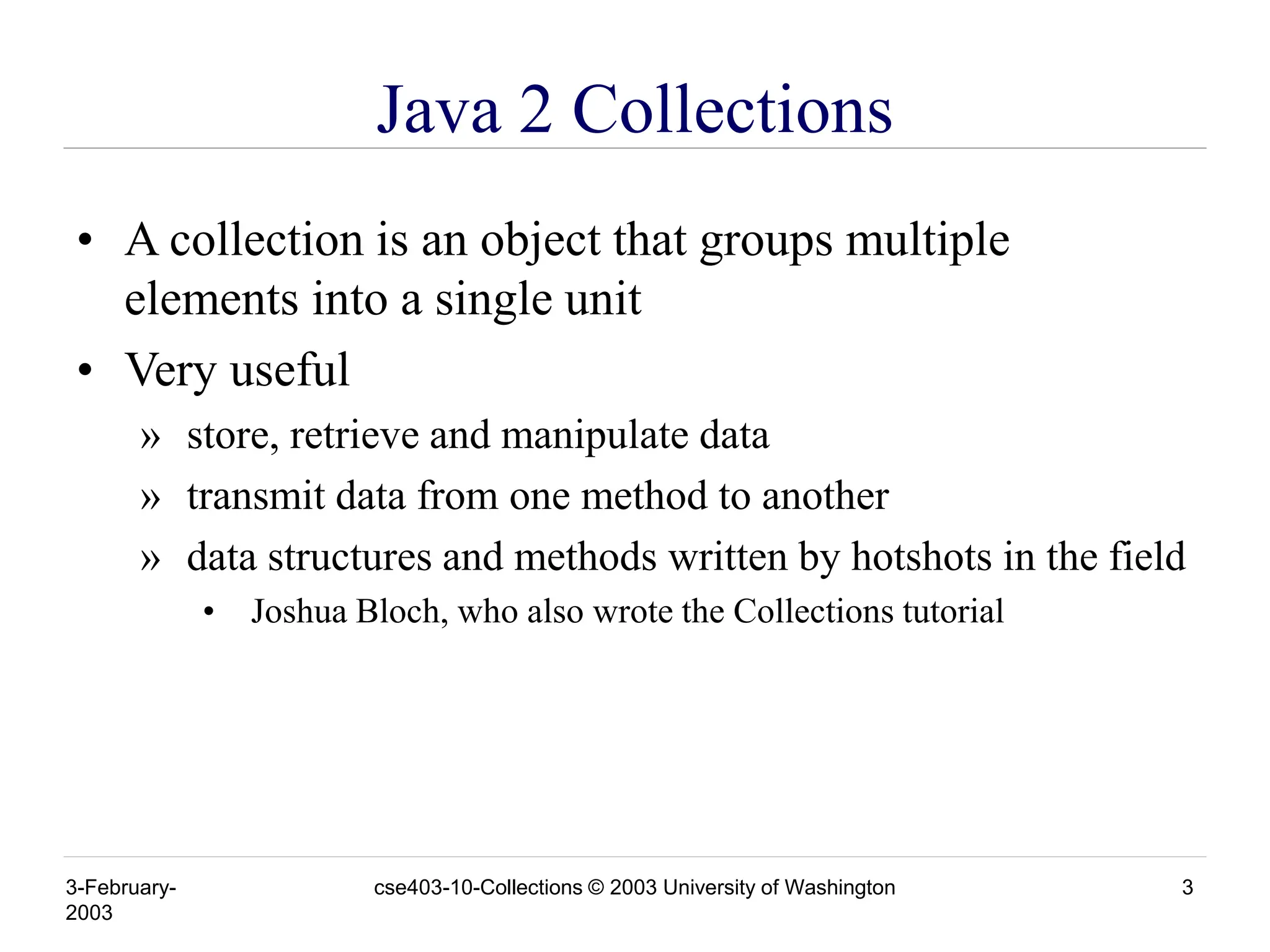
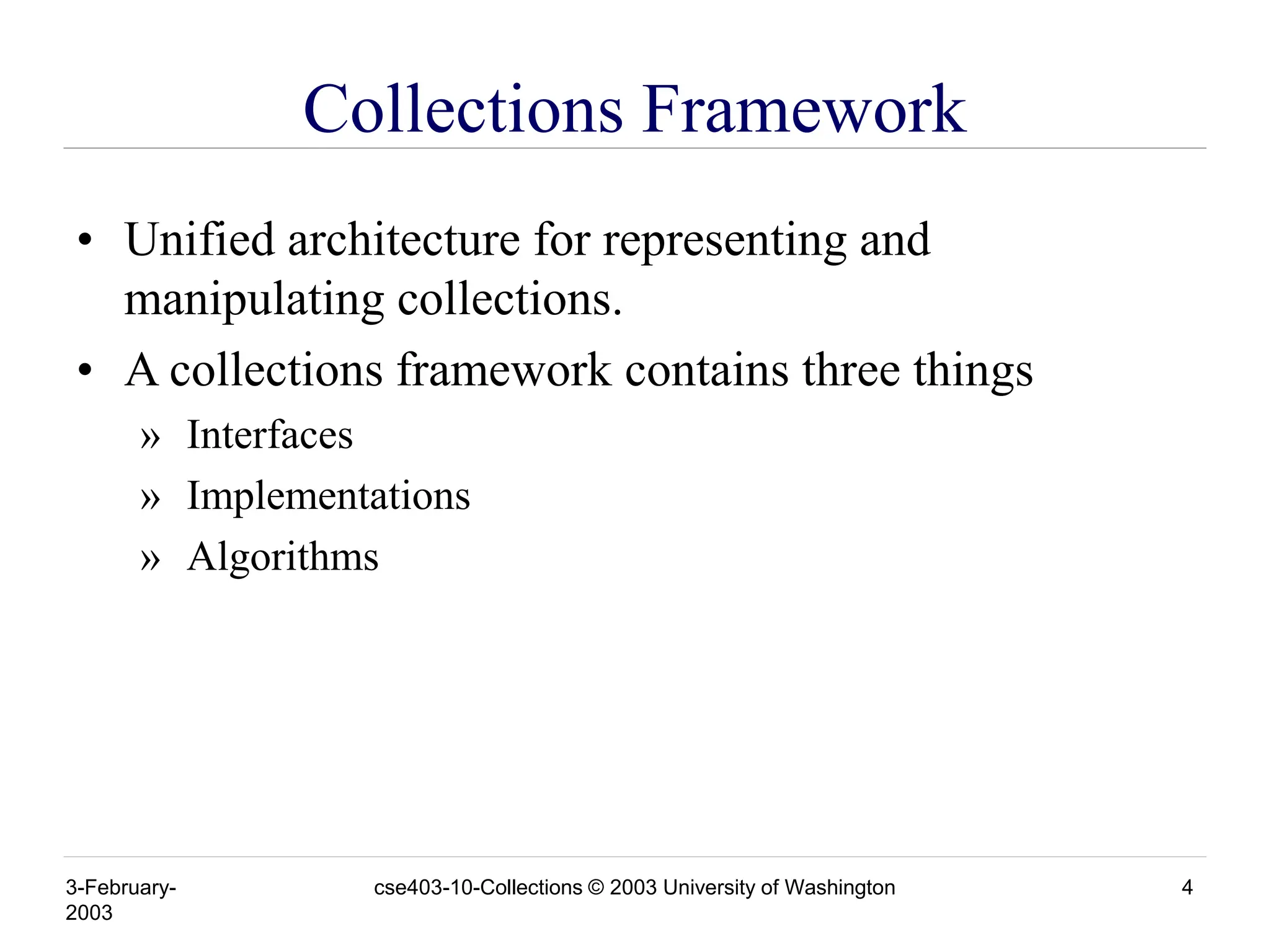
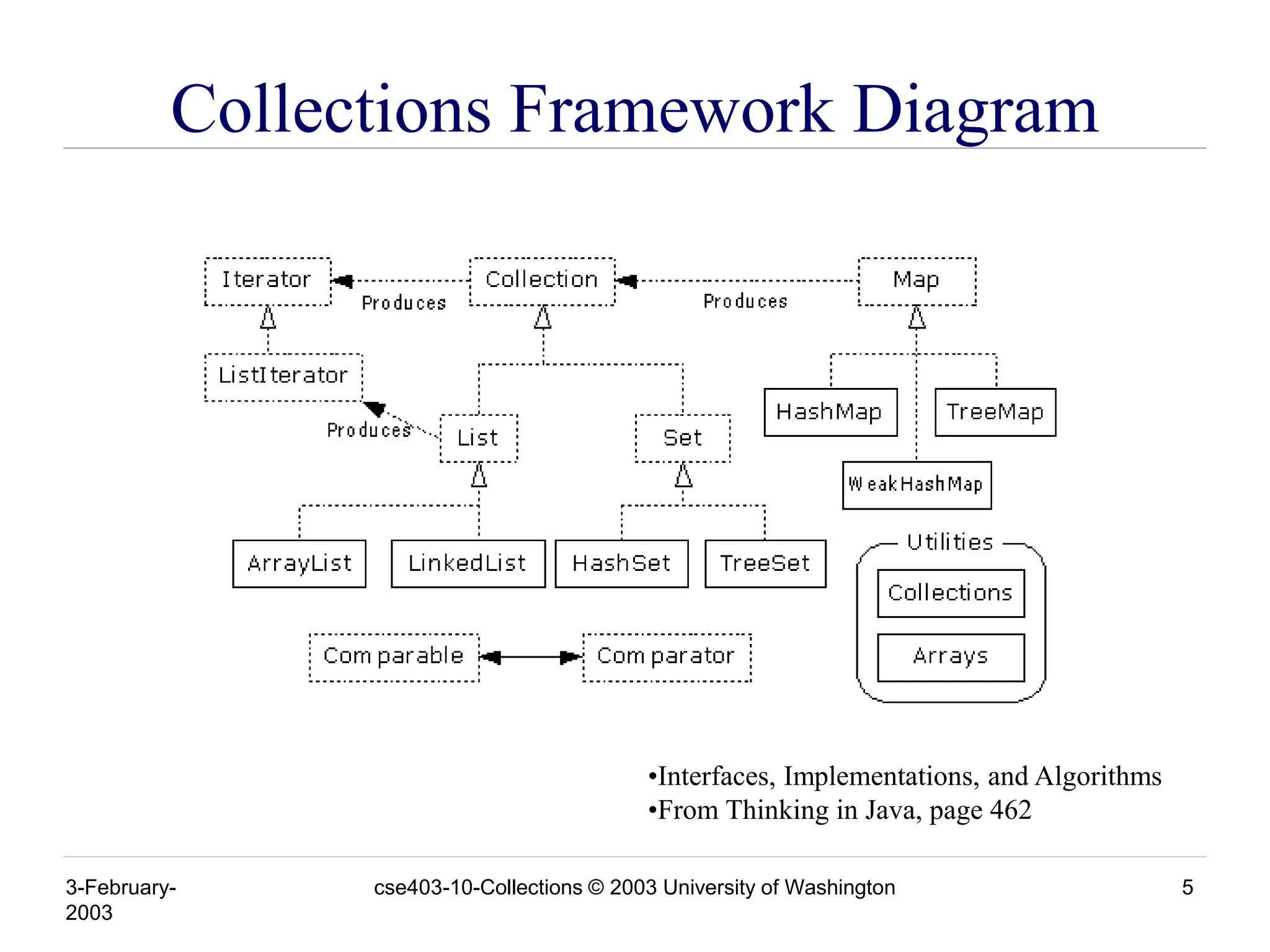
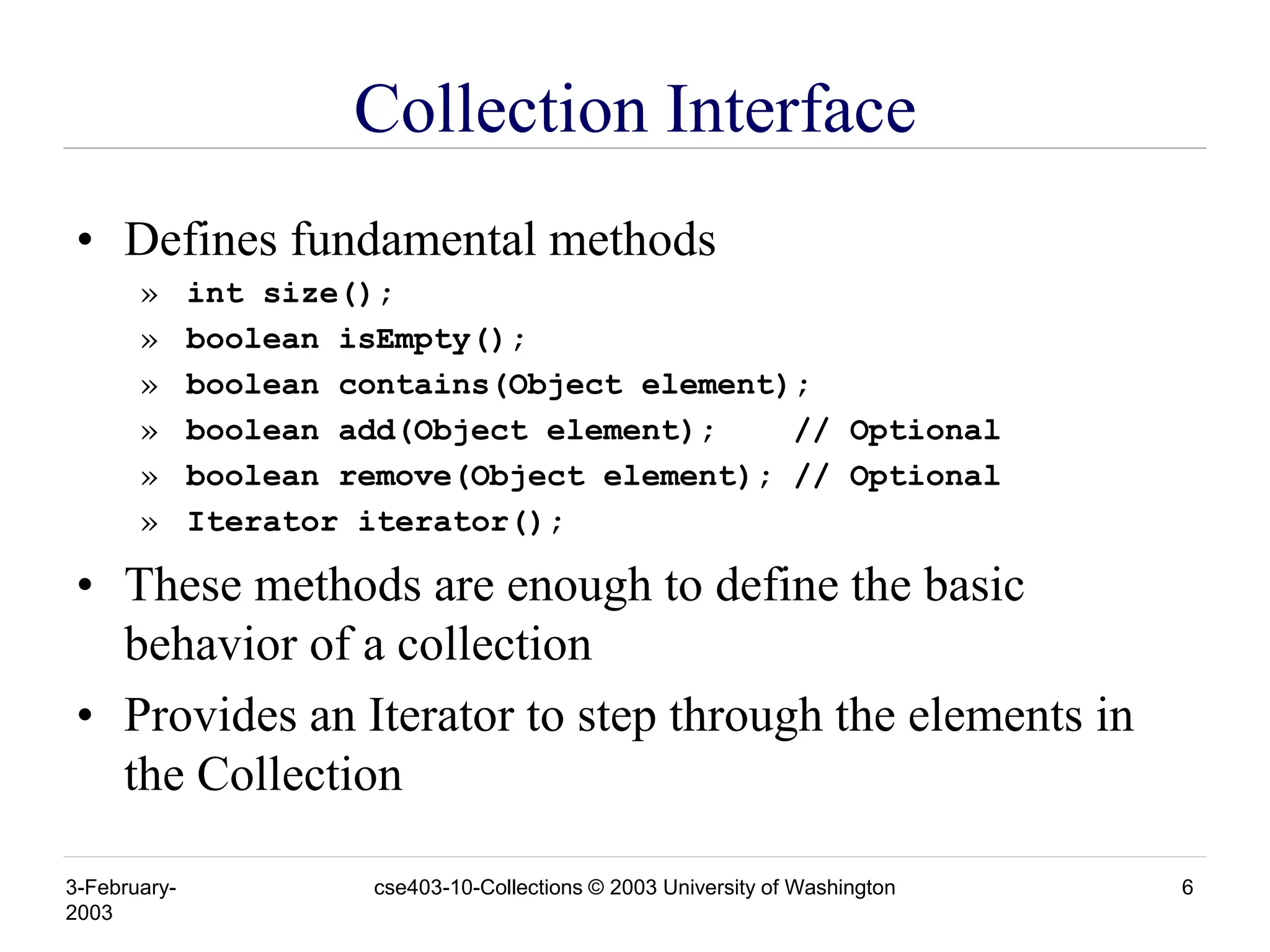
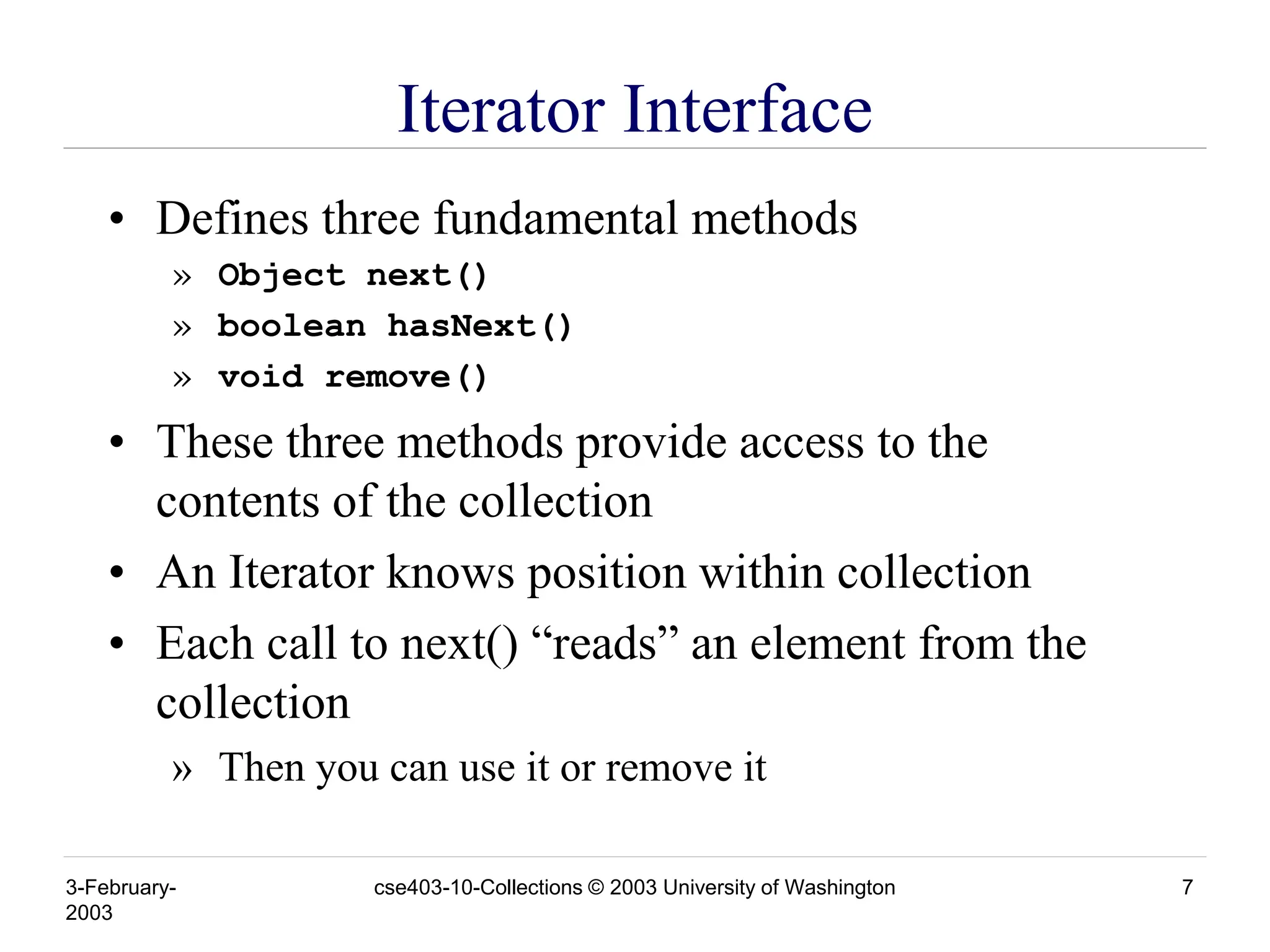
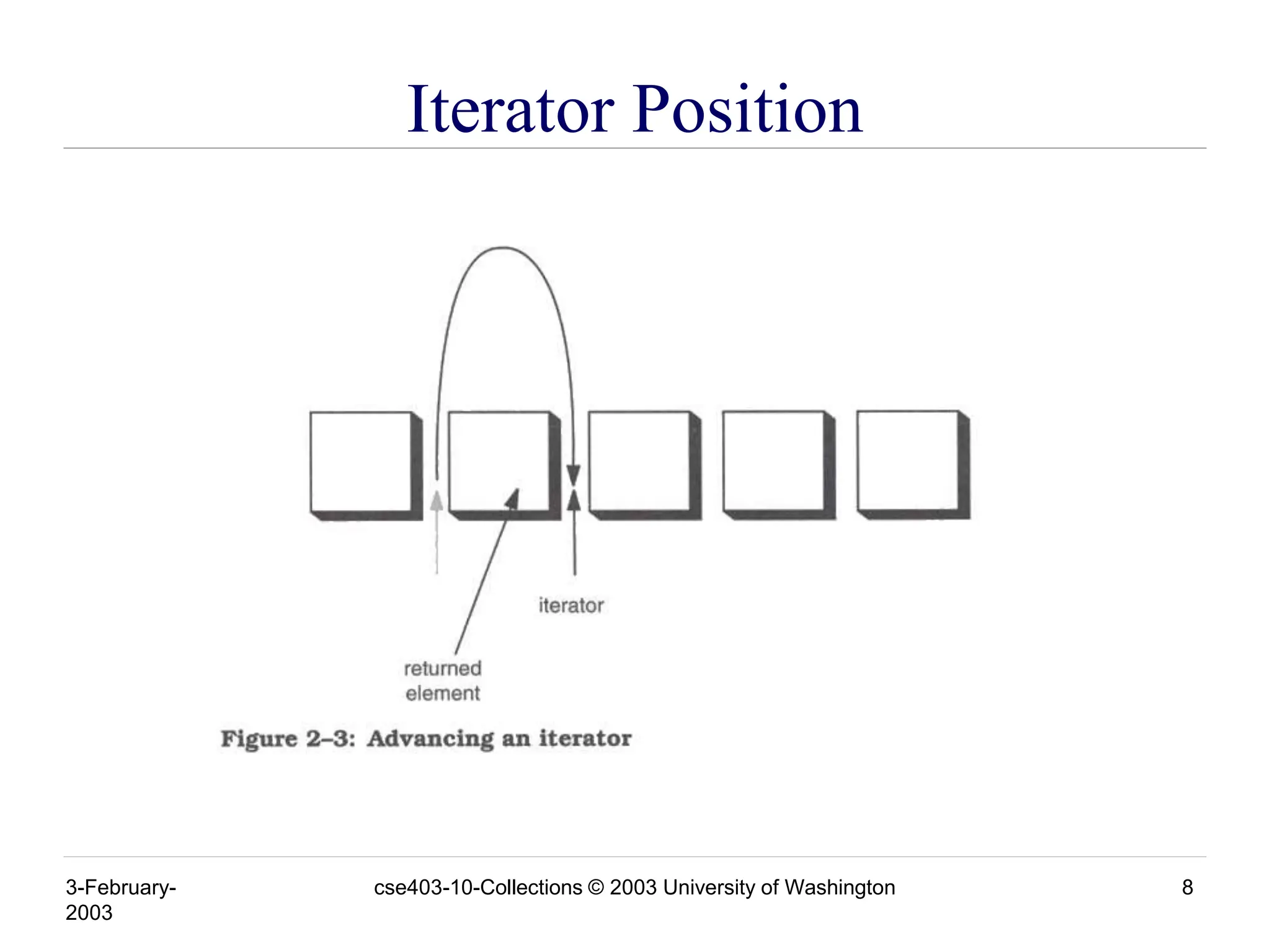
![3-February- 2003 cse403-10-Collections © 2003 University of Washington 9 Example - SimpleCollection public class SimpleCollection { public static void main(String[] args) { Collection c; c = new ArrayList(); System.out.println(c.getClass().getName()); for (int i=1; i <= 10; i++) { c.add(i + " * " + i + " = "+i*i); } Iterator iter = c.iterator(); while (iter.hasNext()) System.out.println(iter.next()); } }](https://image.slidesharecdn.com/java1-240722092932-3d32046e/75/java1-pptjava-is-programming-language-having-core-and-advanced-java-9-2048.jpg)
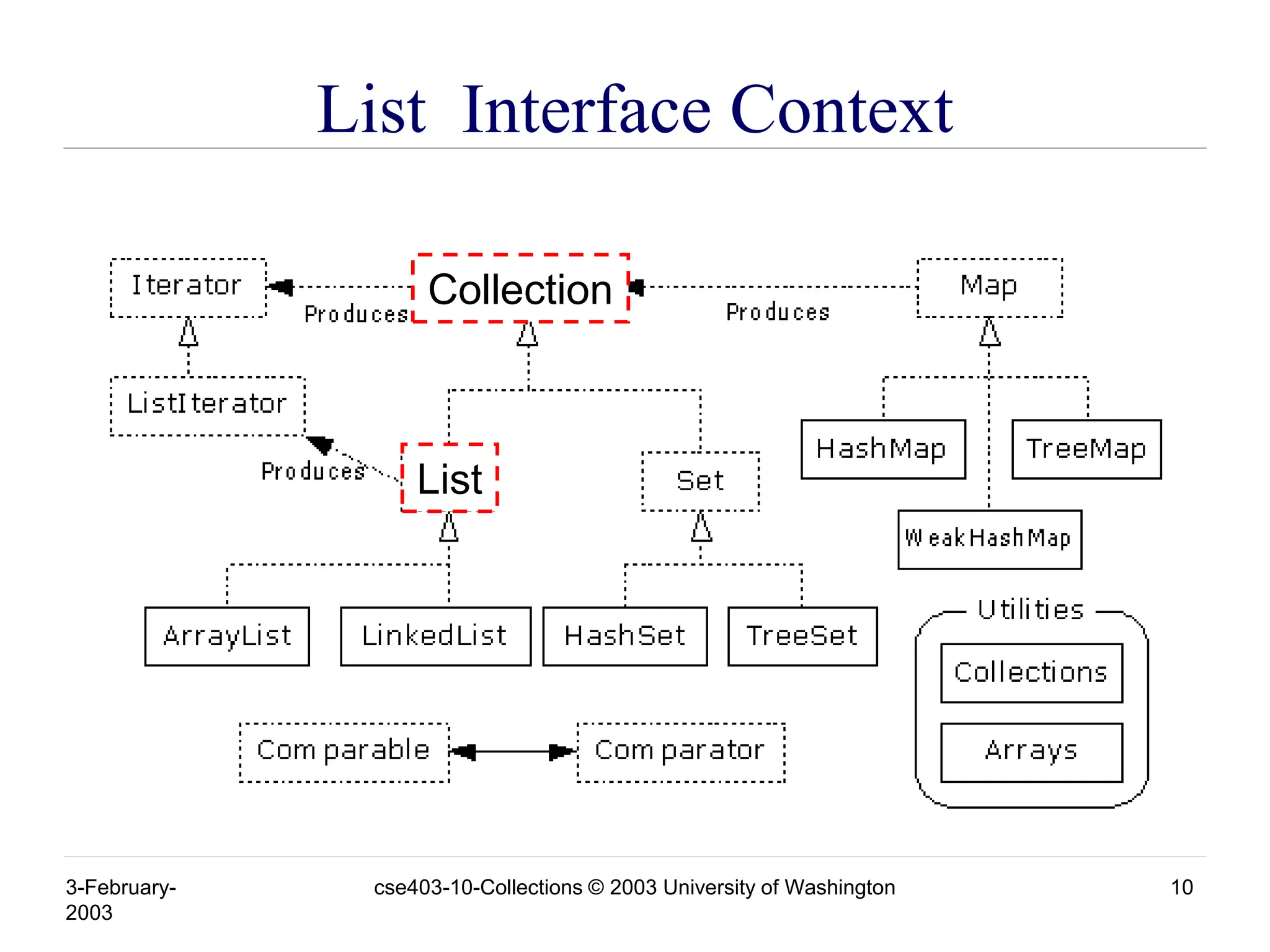
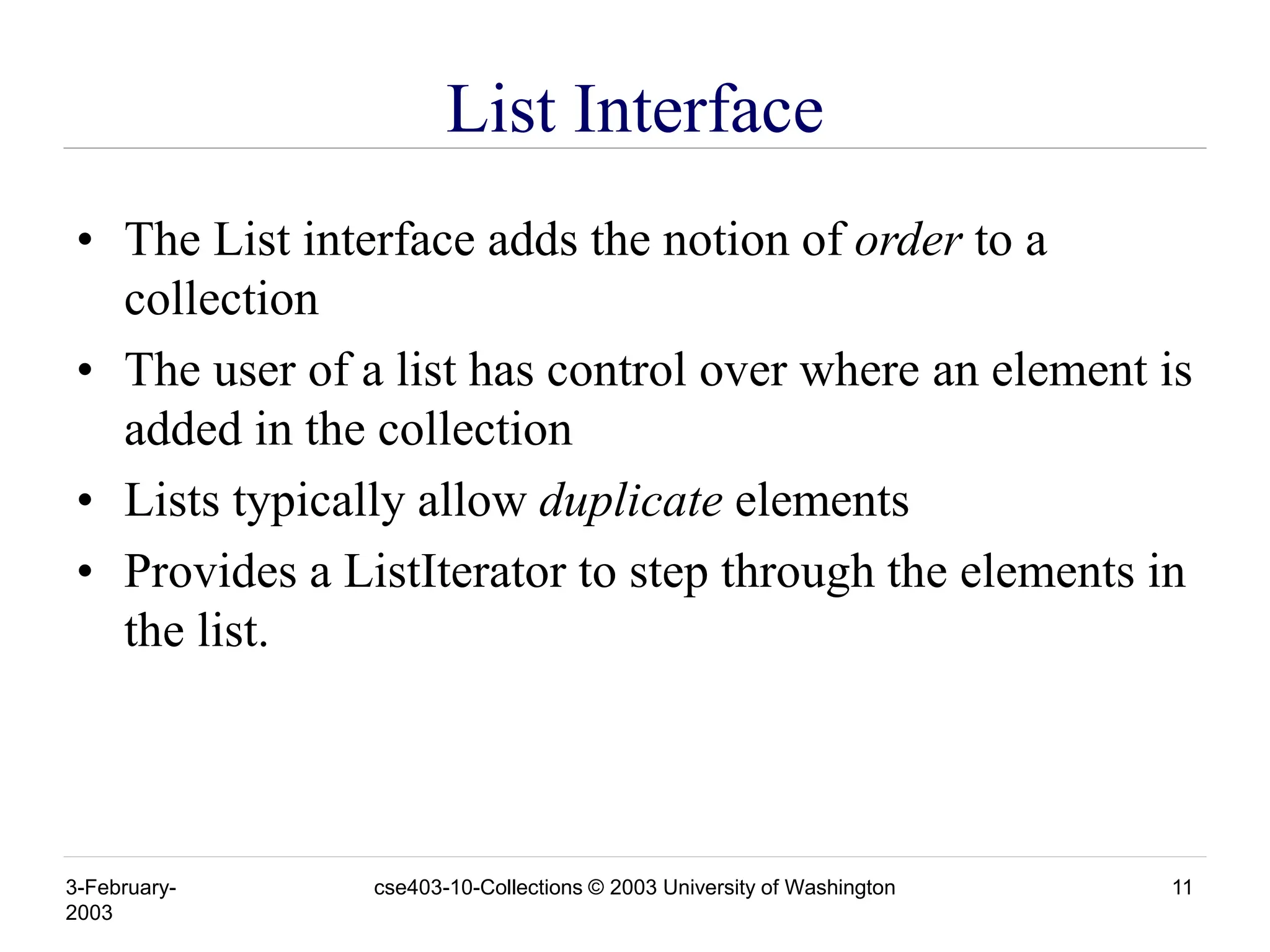
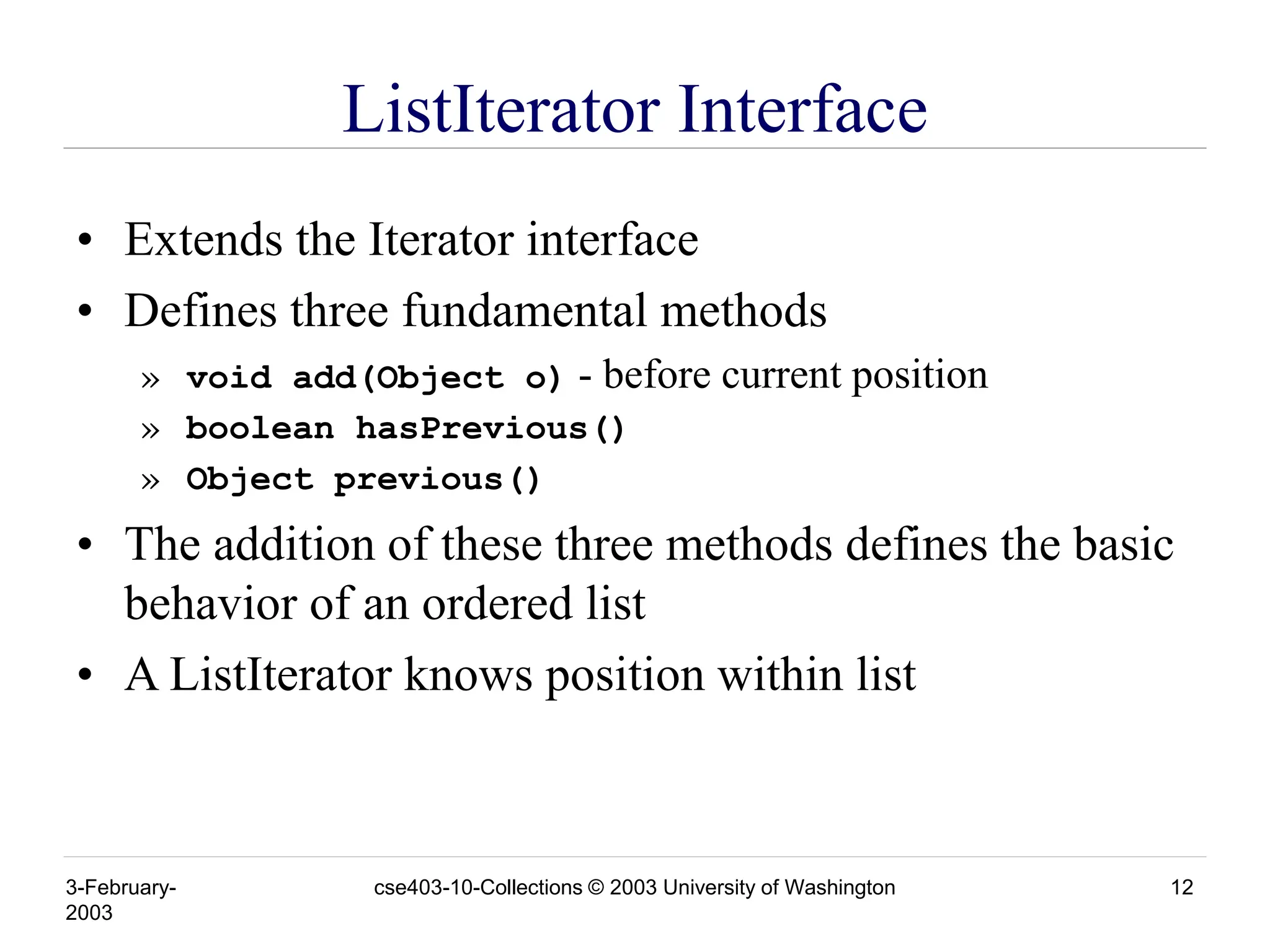
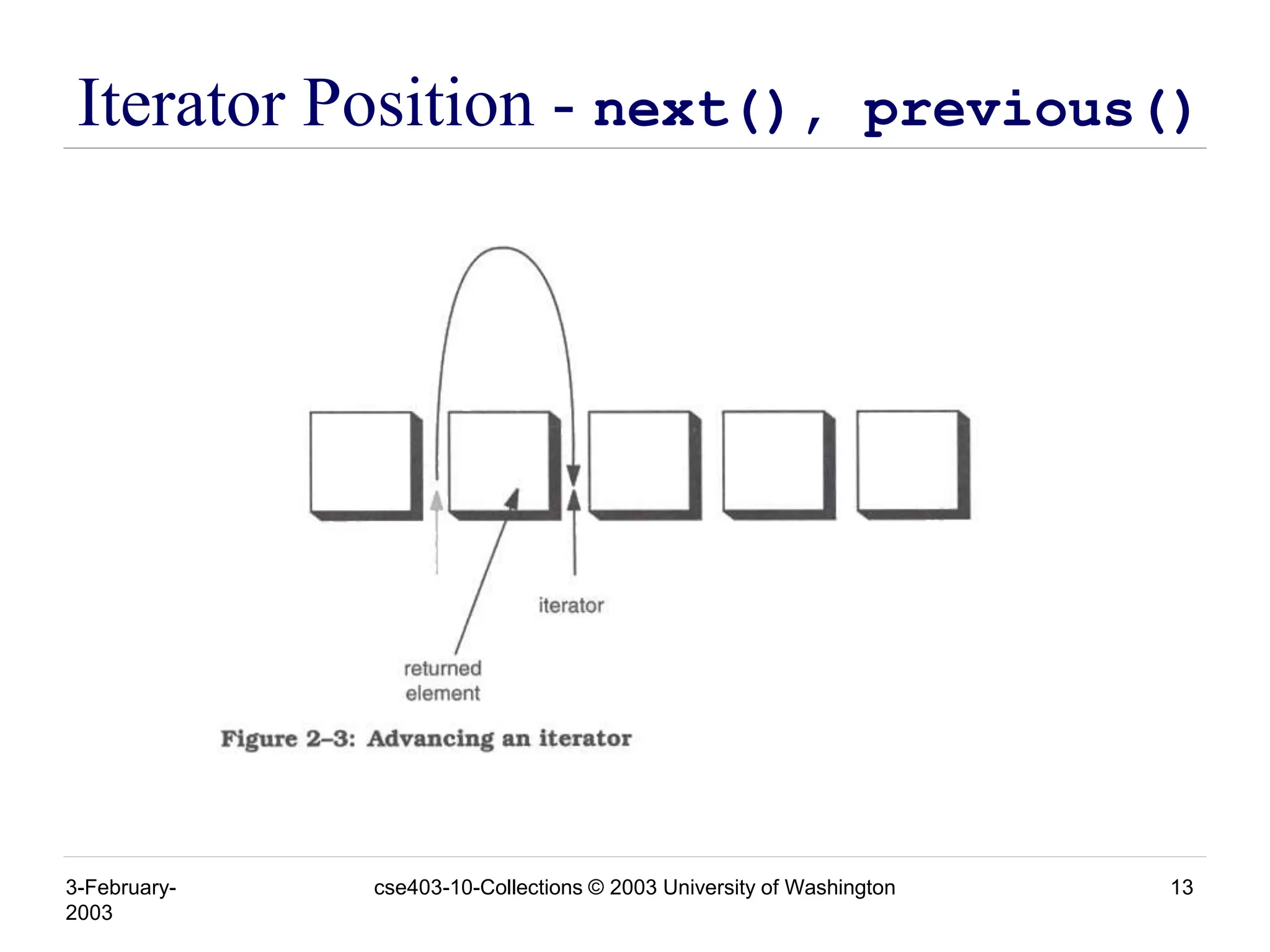
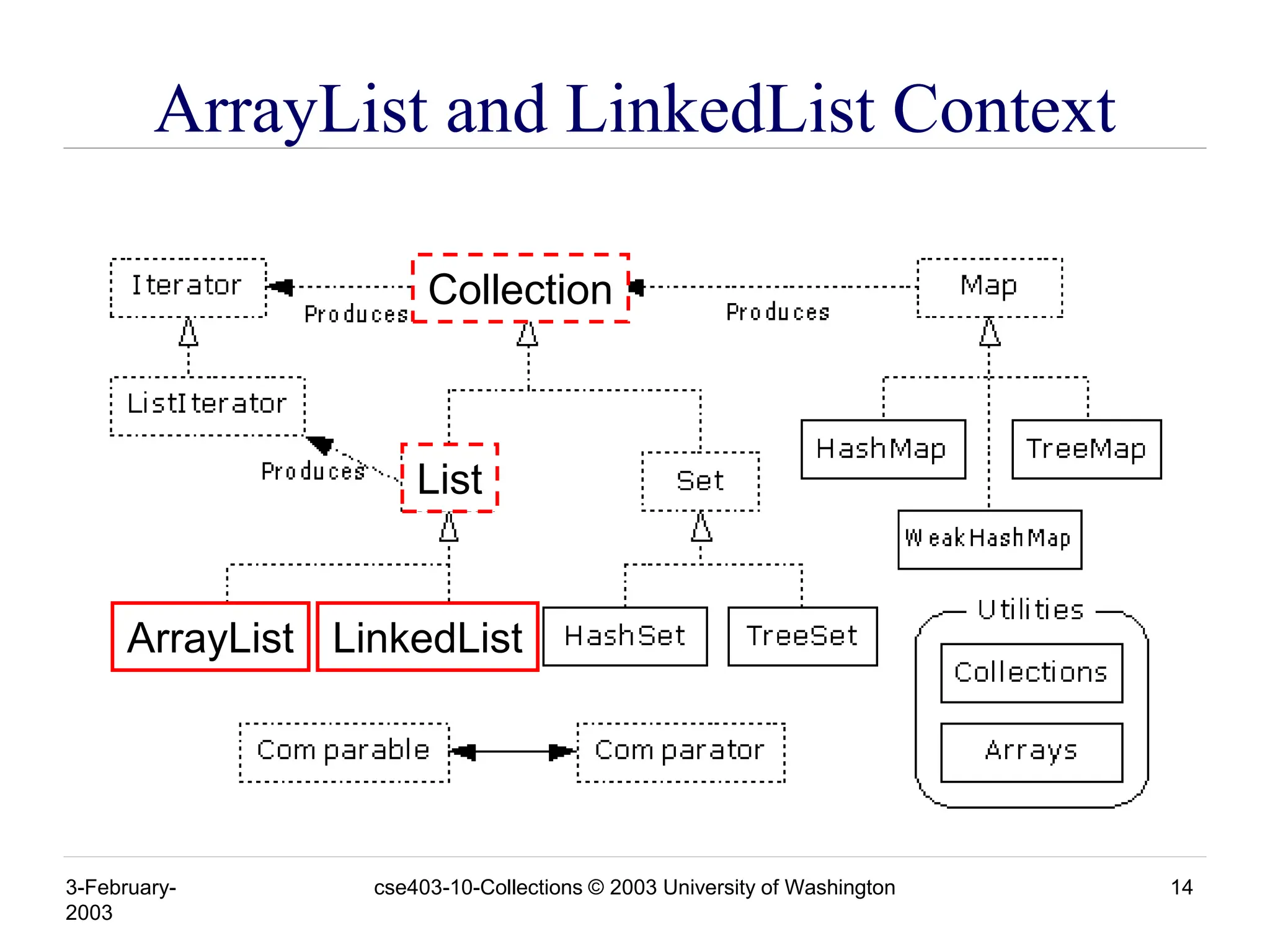
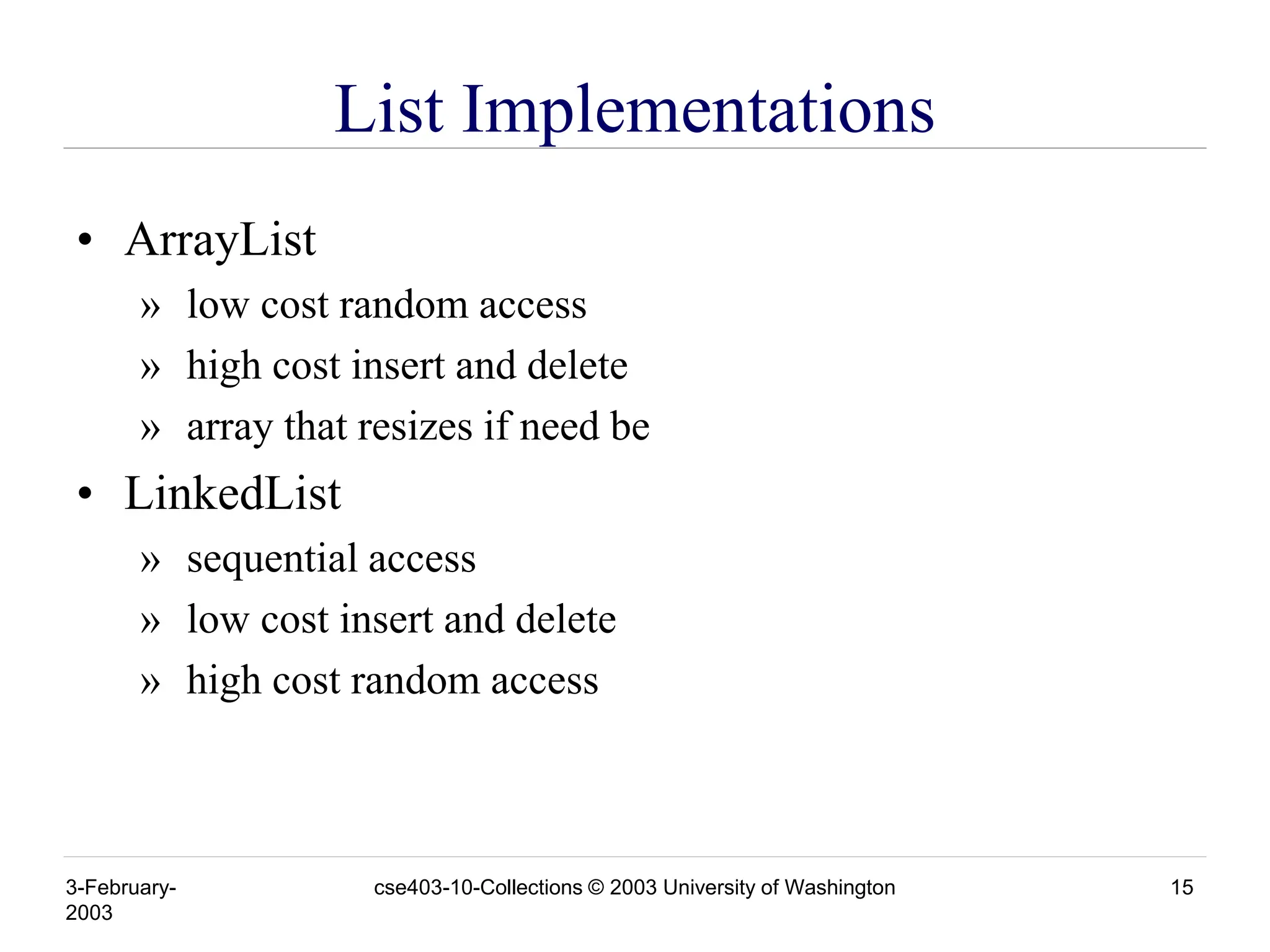
![3-February- 2003 cse403-10-Collections © 2003 University of Washington 16 ArrayList overview • Constant time positional access (it’s an array) • One tuning parameter, the initial capacity public ArrayList(int initialCapacity) { super(); if (initialCapacity < 0) throw new IllegalArgumentException( "Illegal Capacity: "+initialCapacity); this.elementData = new Object[initialCapacity]; }](https://image.slidesharecdn.com/java1-240722092932-3d32046e/75/java1-pptjava-is-programming-language-having-core-and-advanced-java-16-2048.jpg)
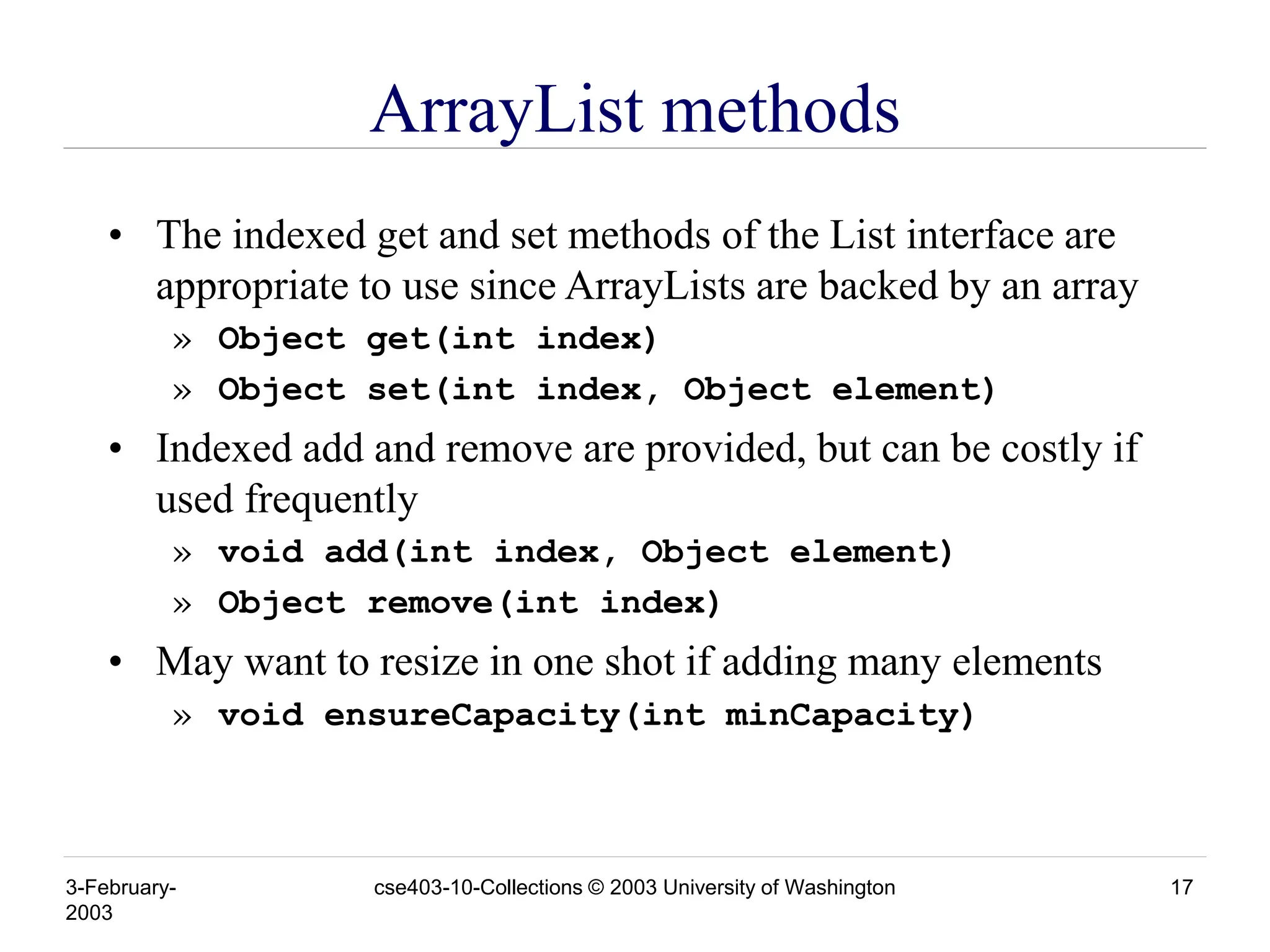
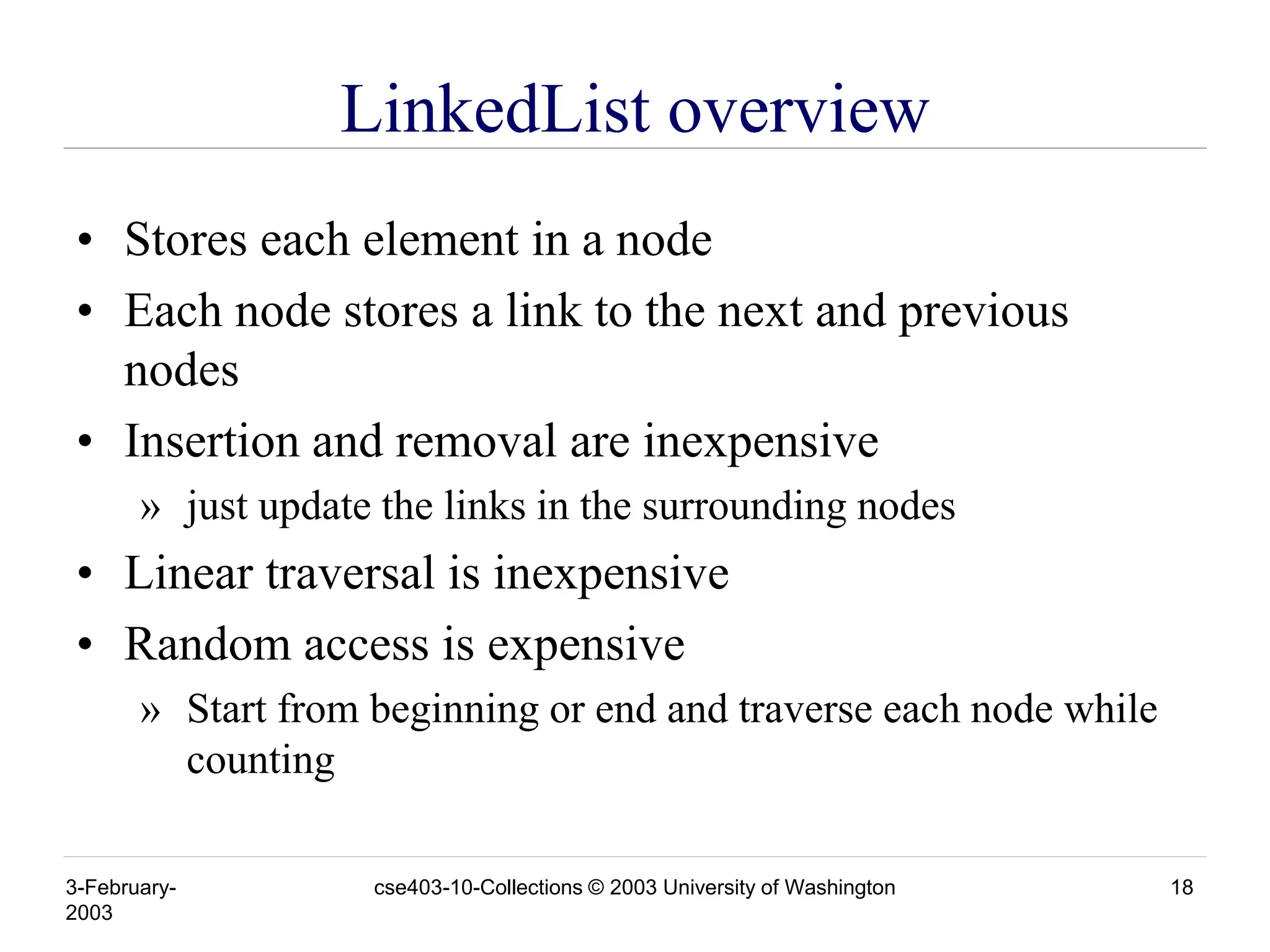
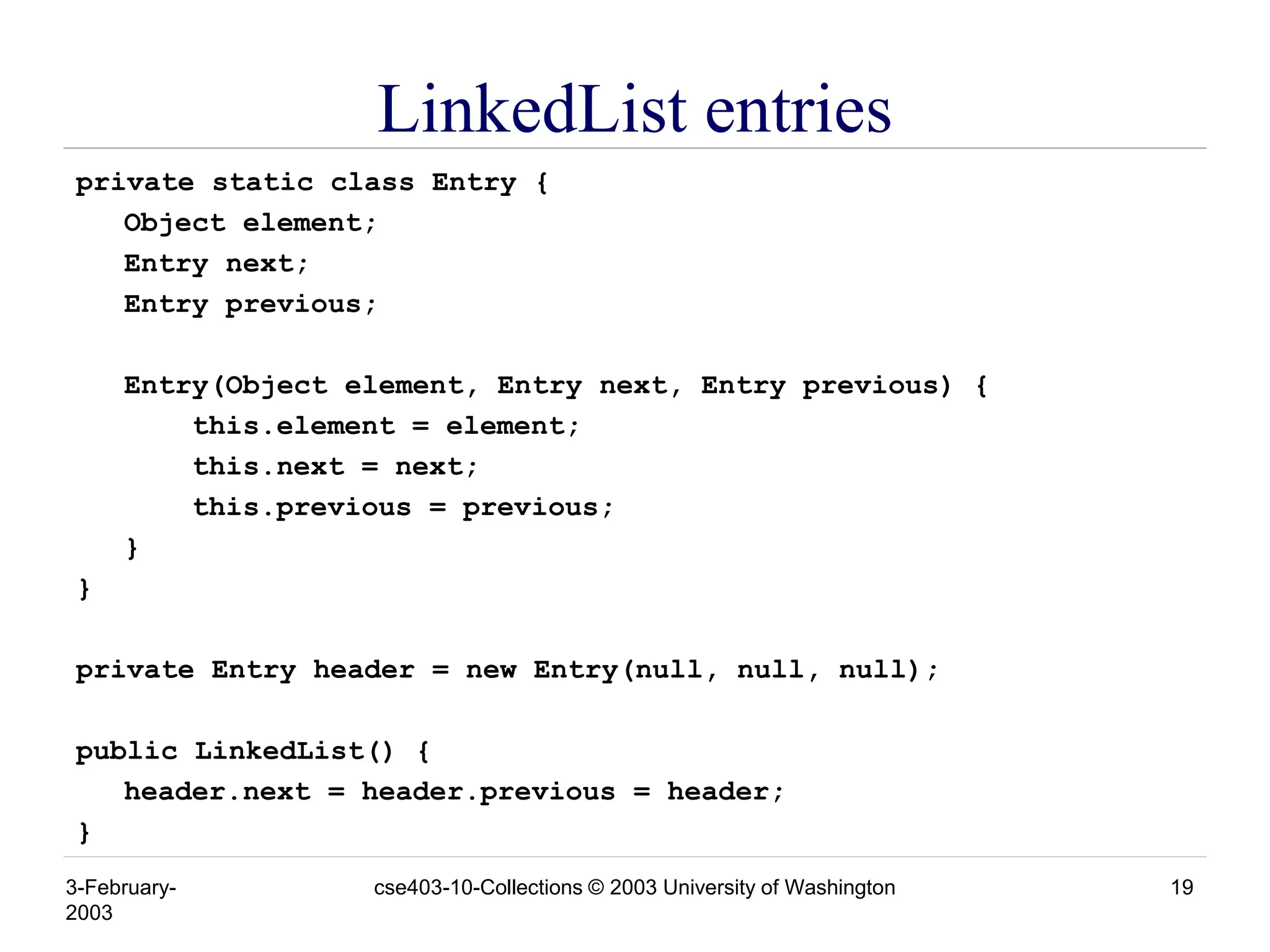
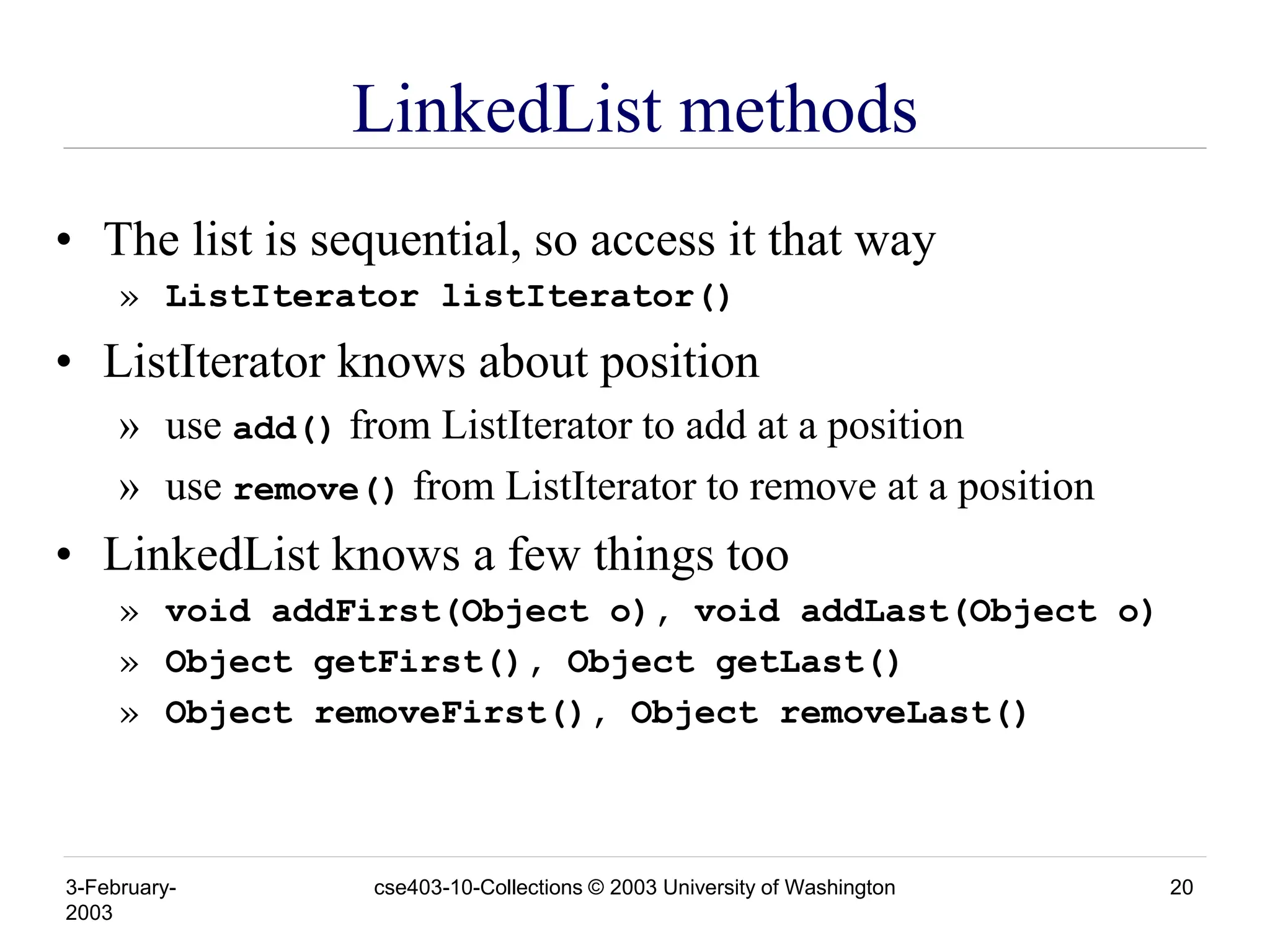
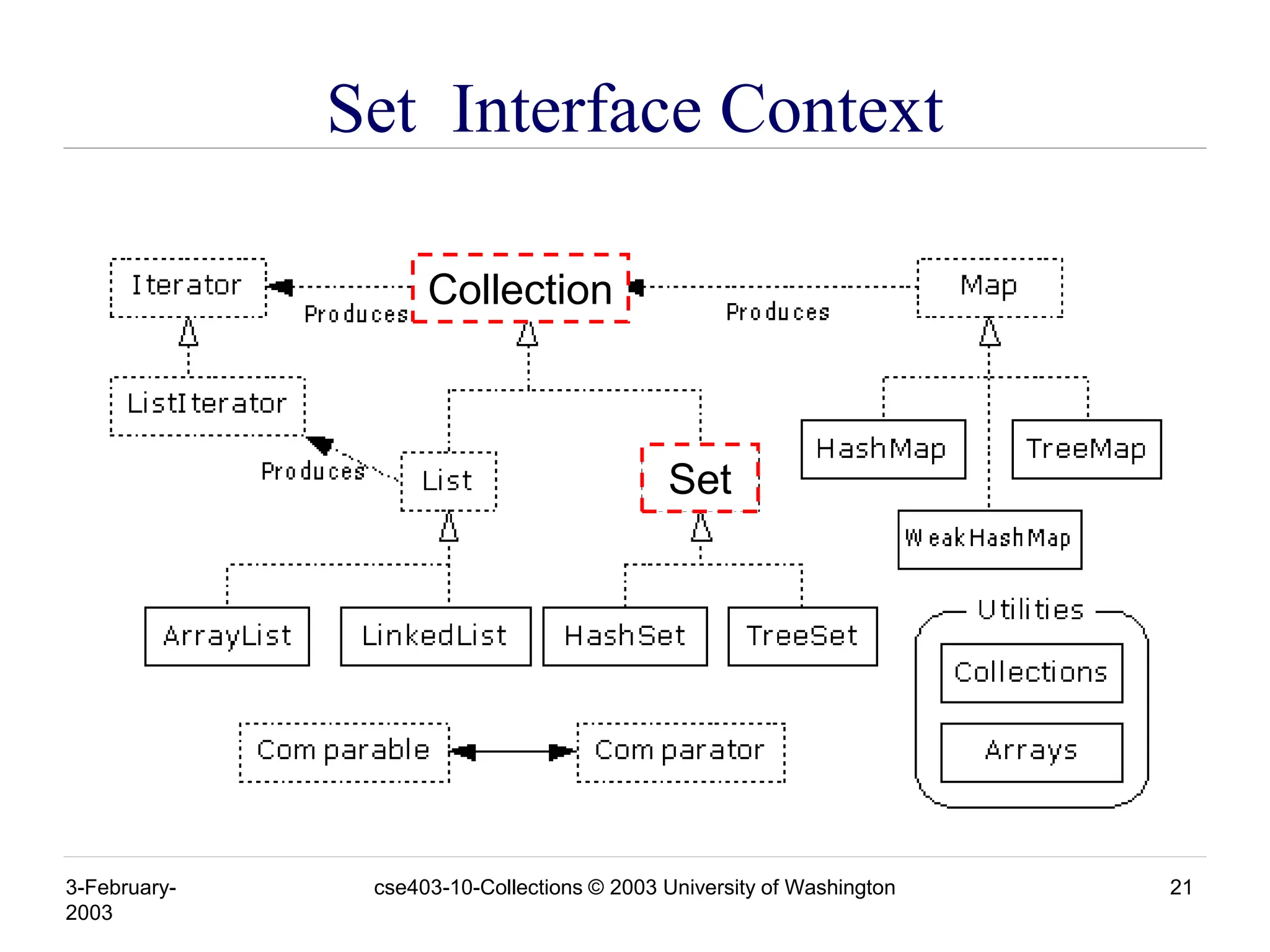
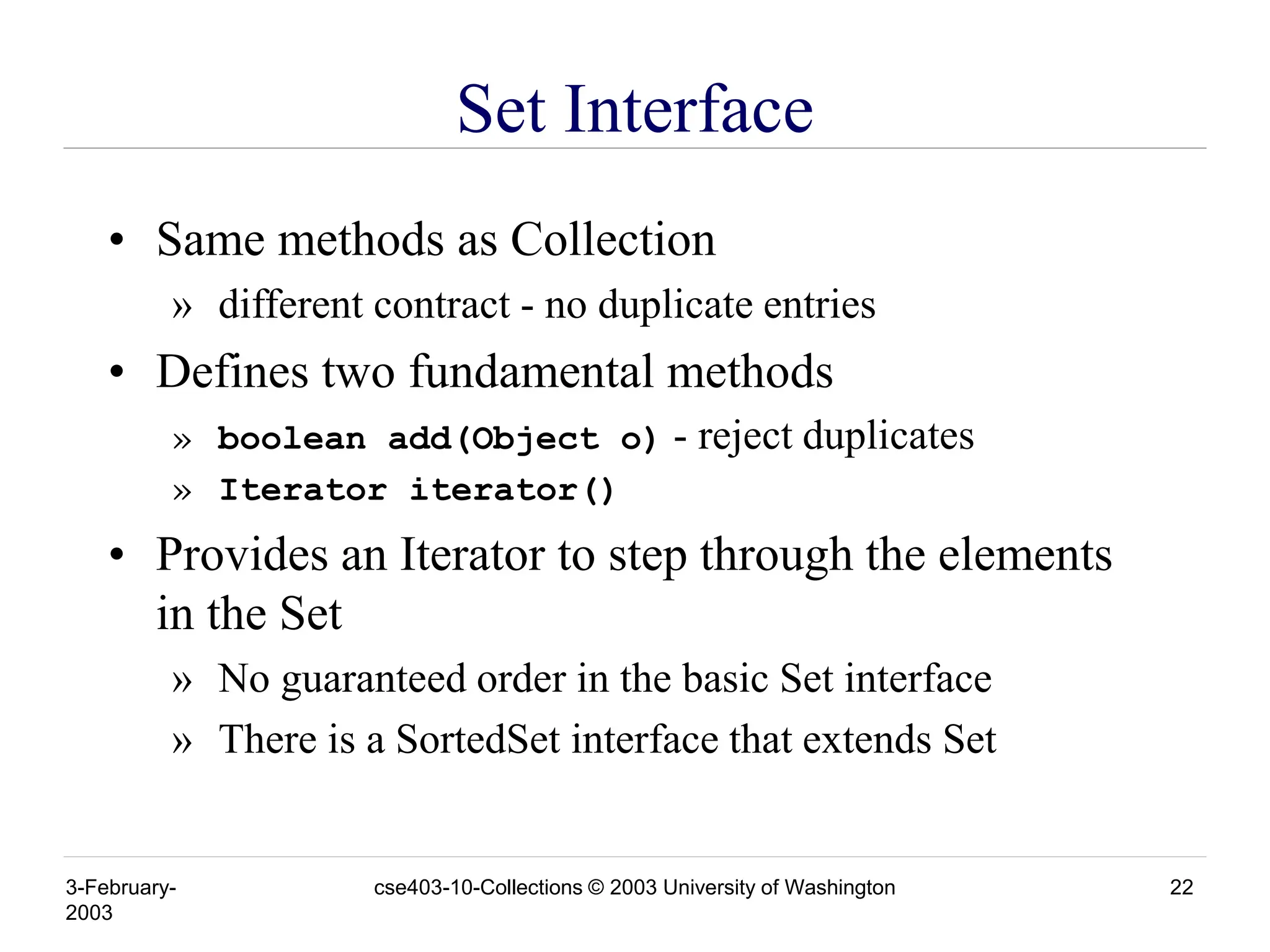
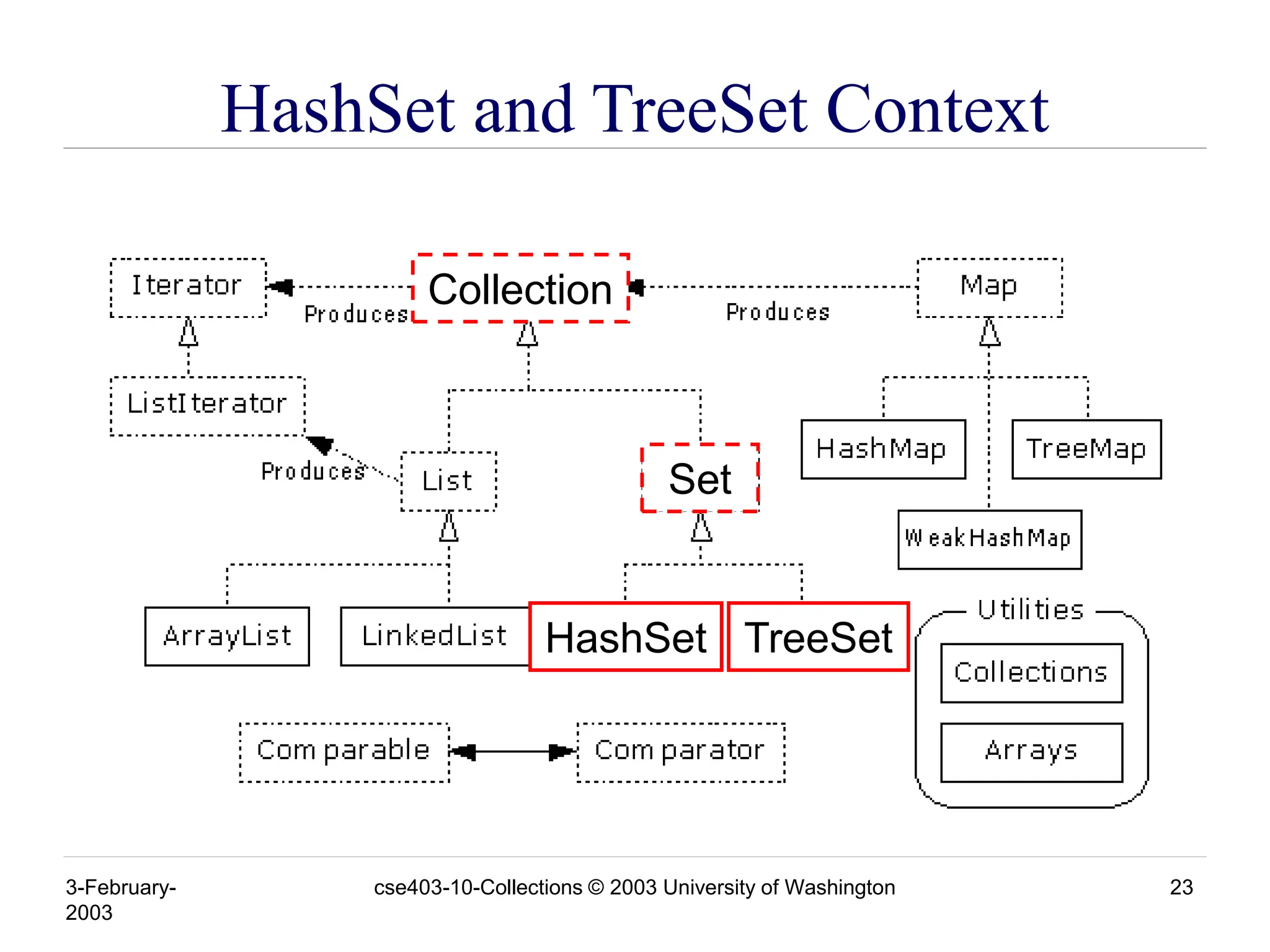
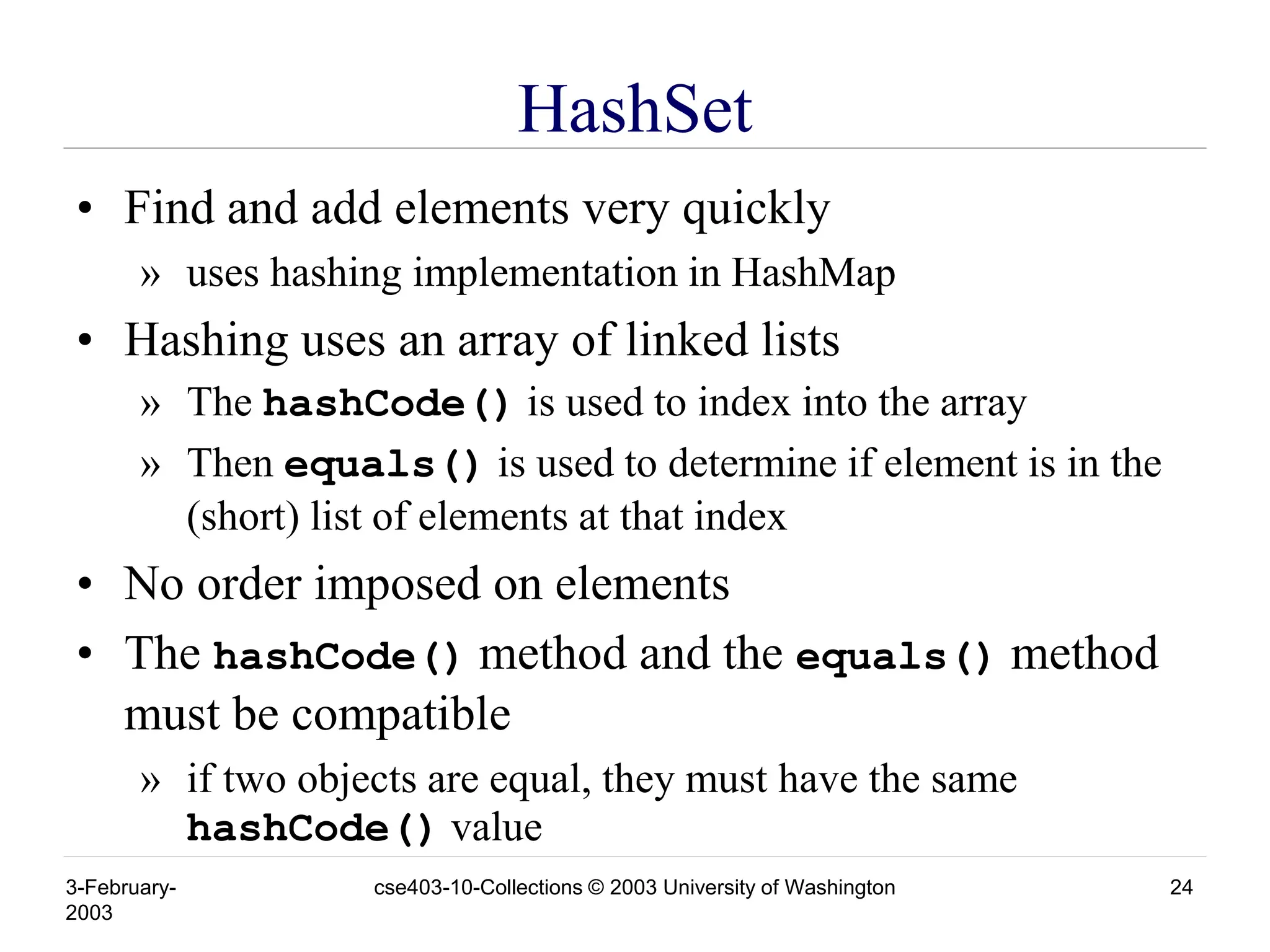
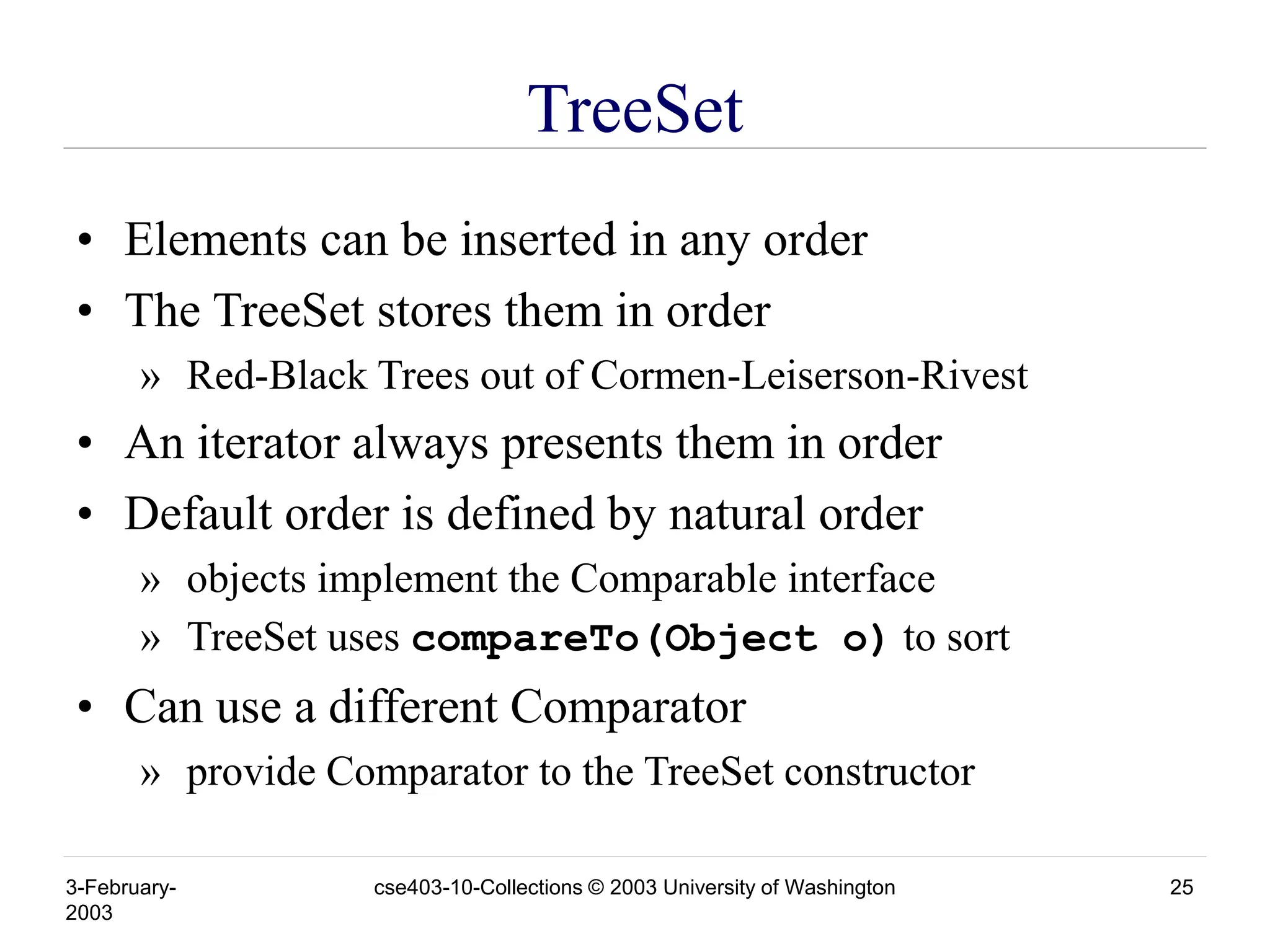
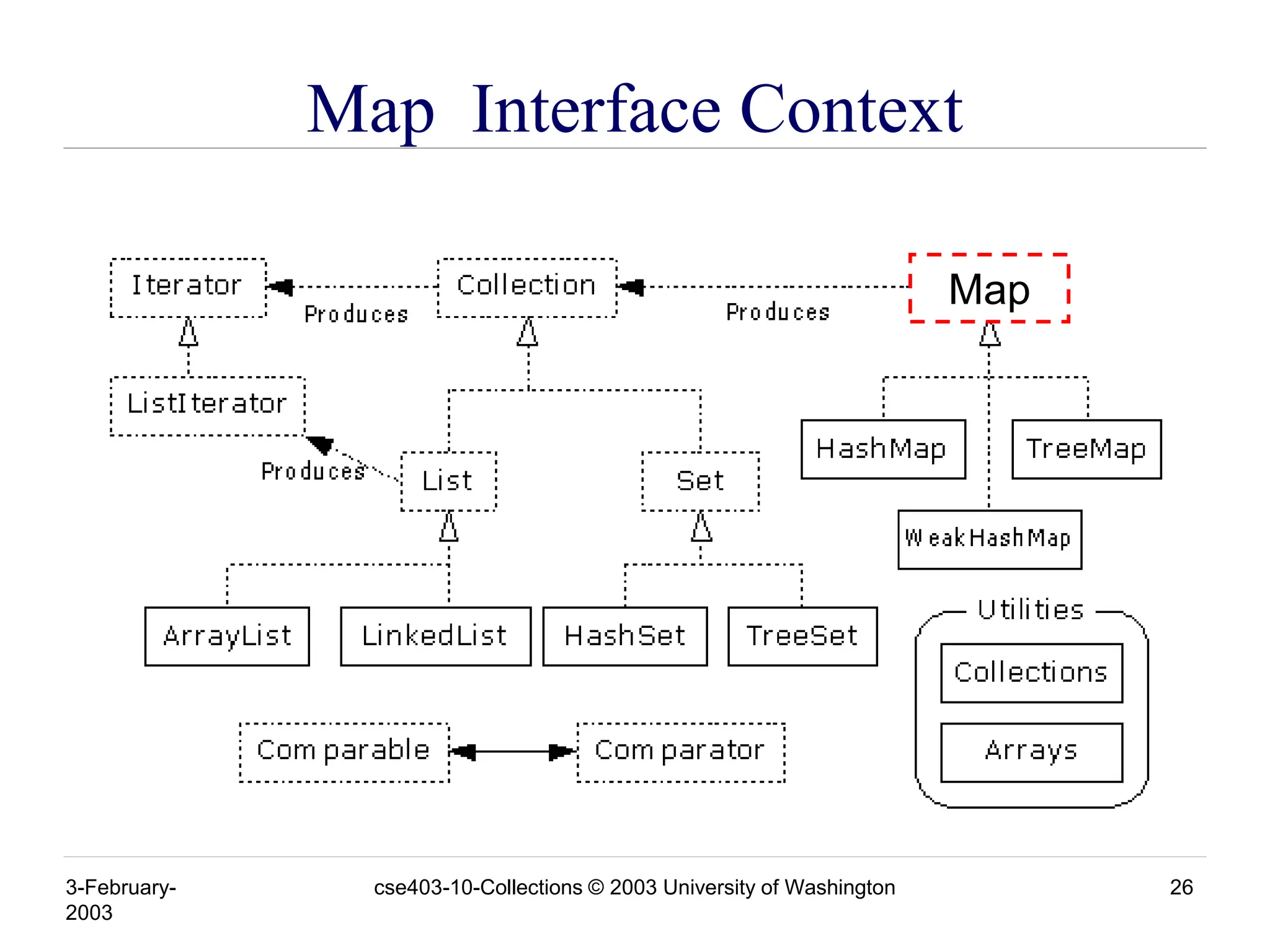
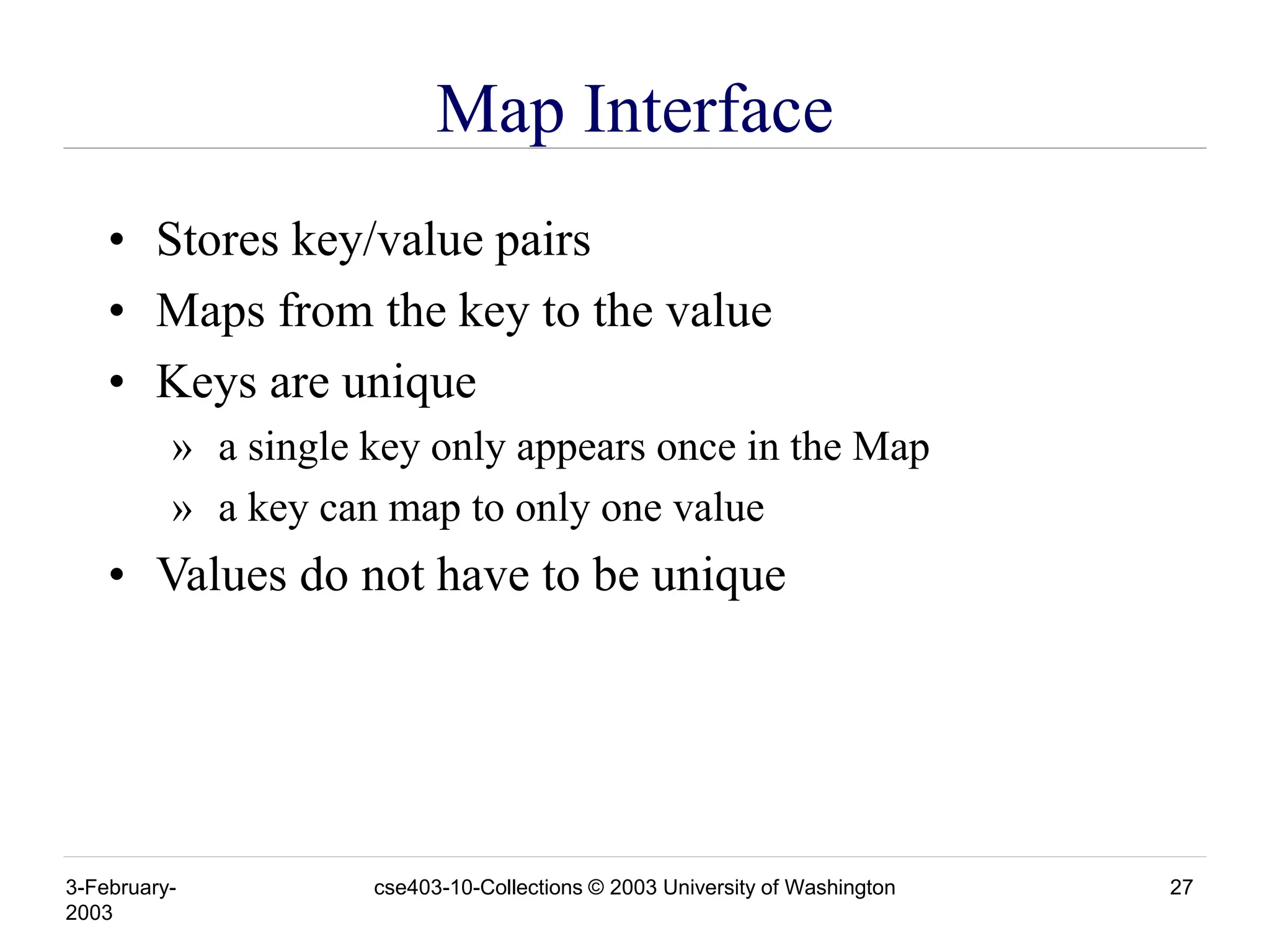
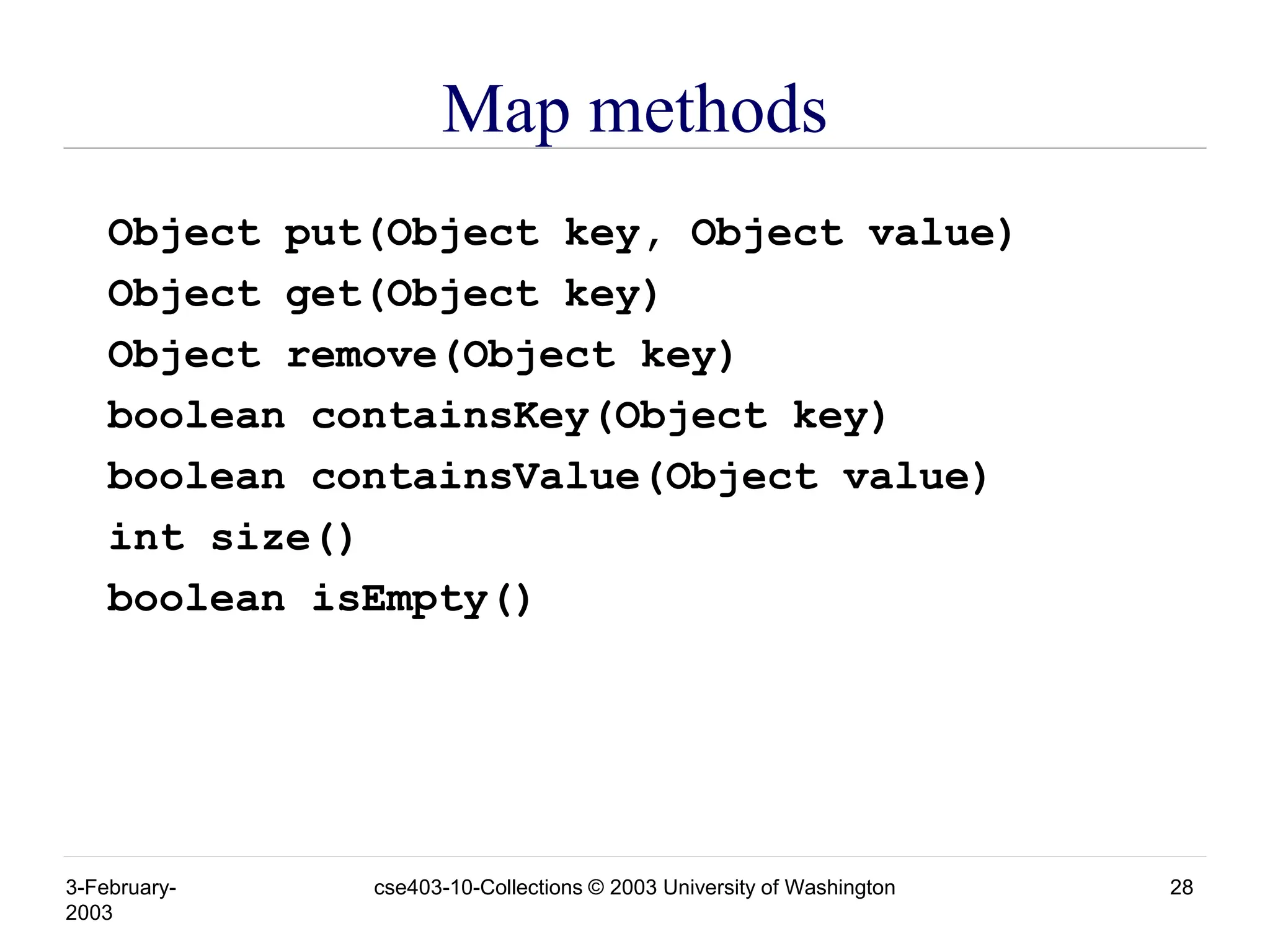
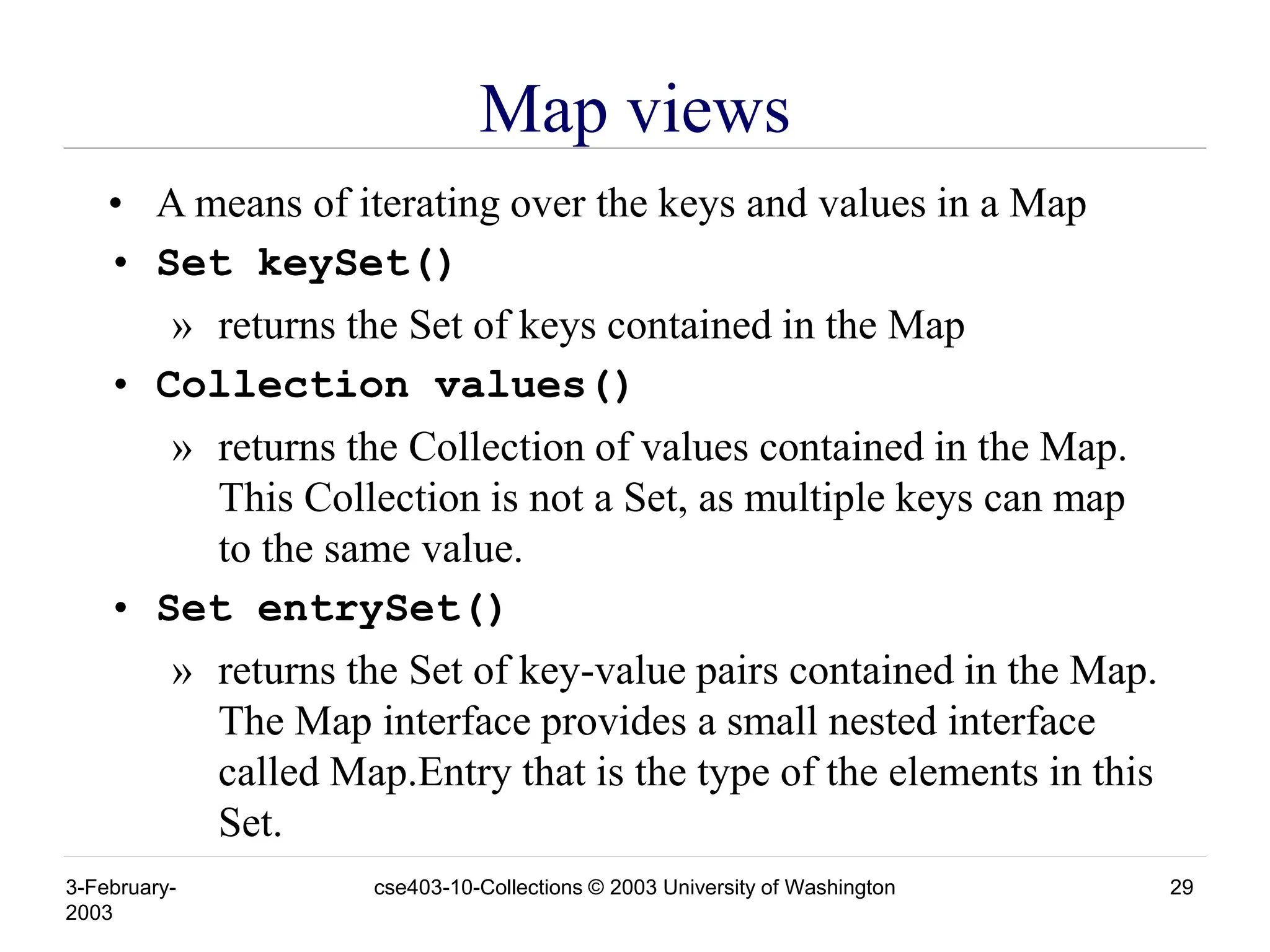
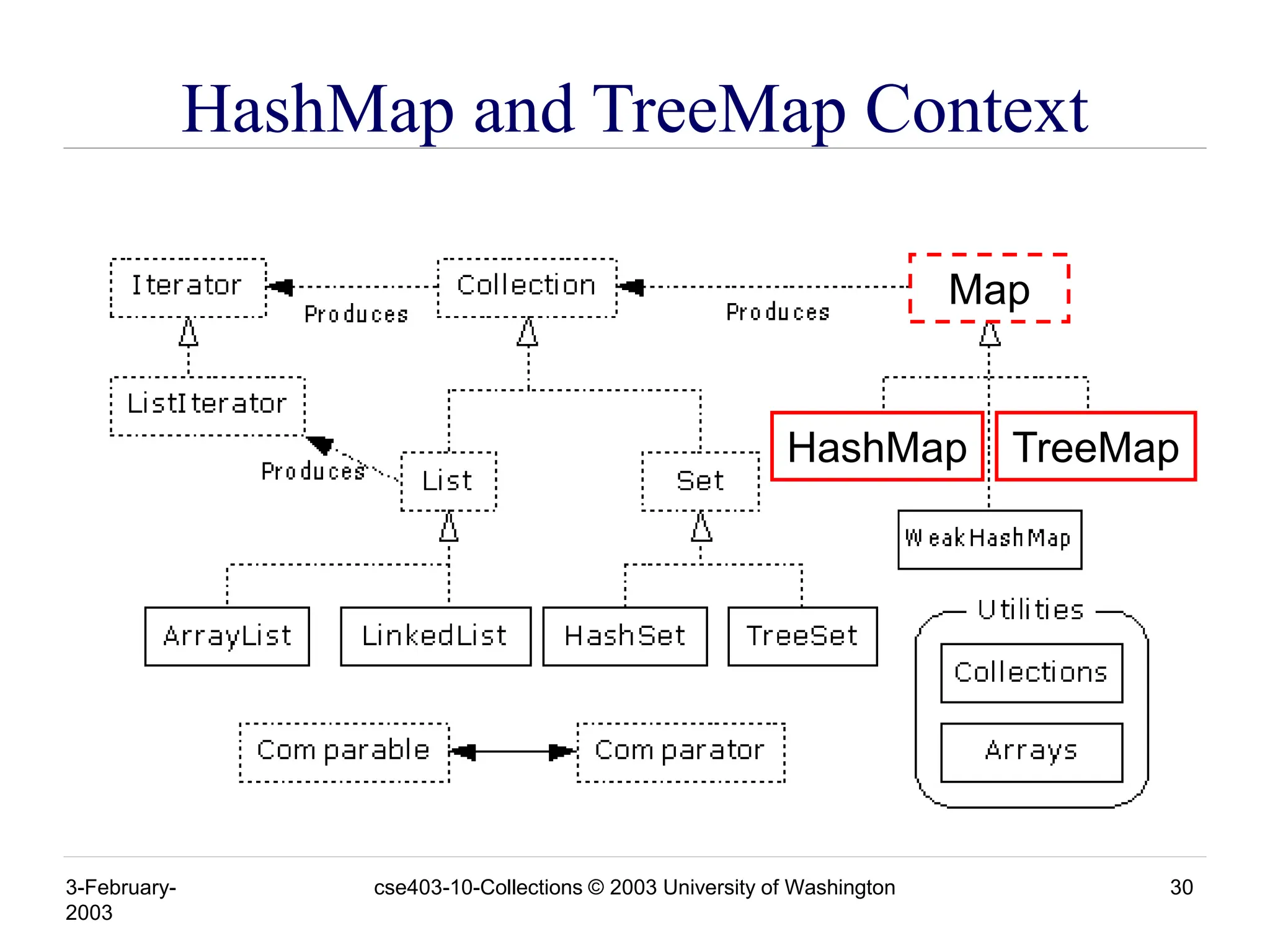
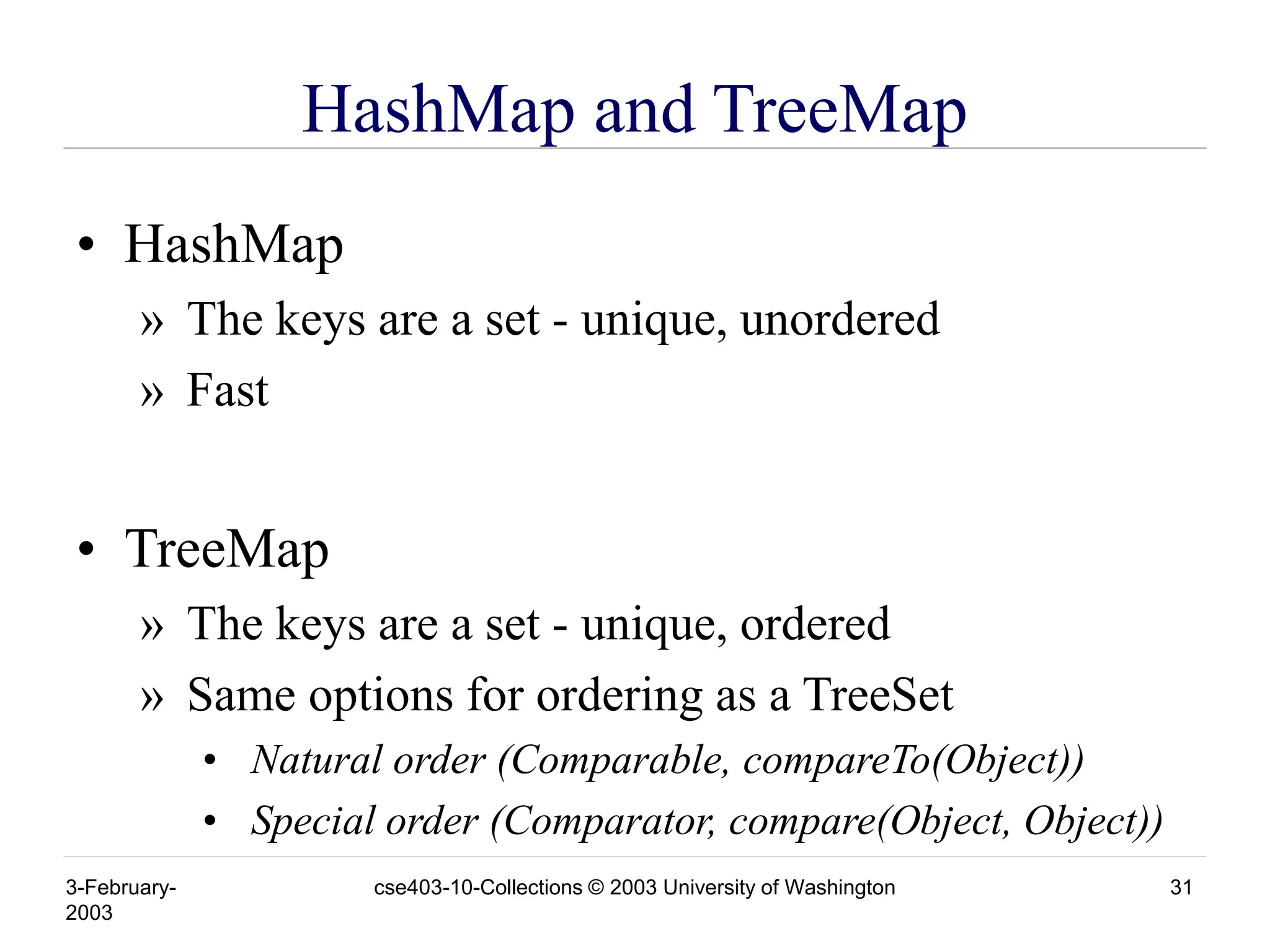
![3-February- 2003 cse403-10-Collections © 2003 University of Washington 32 Bulk Operations • In addition to the basic operations, a Collection may provide “bulk” operations boolean containsAll(Collection c); boolean addAll(Collection c); // Optional boolean removeAll(Collection c); // Optional boolean retainAll(Collection c); // Optional void clear(); // Optional Object[] toArray(); Object[] toArray(Object a[]);](https://image.slidesharecdn.com/java1-240722092932-3d32046e/75/java1-pptjava-is-programming-language-having-core-and-advanced-java-32-2048.jpg)
